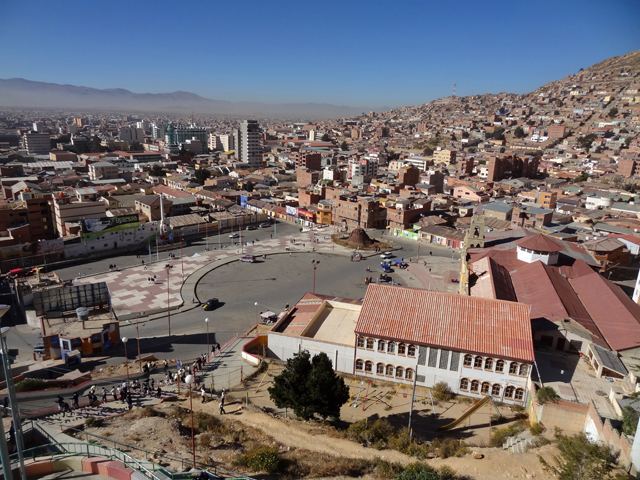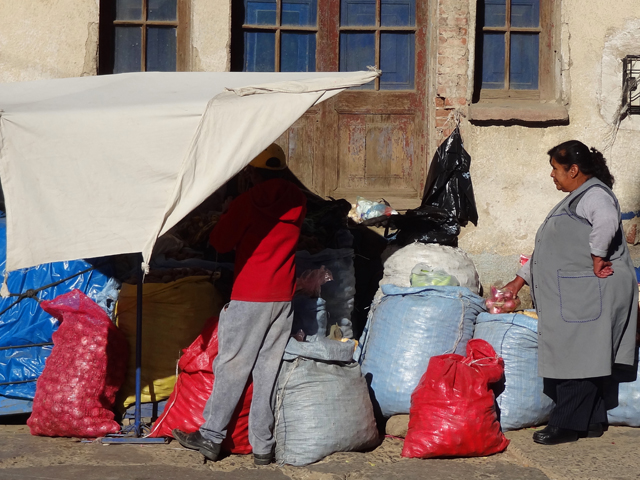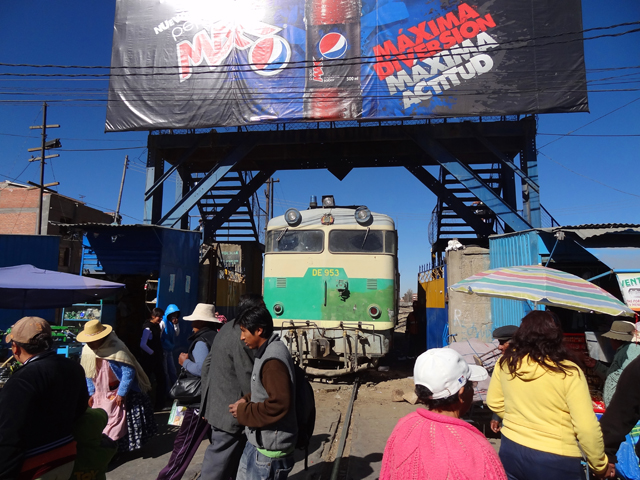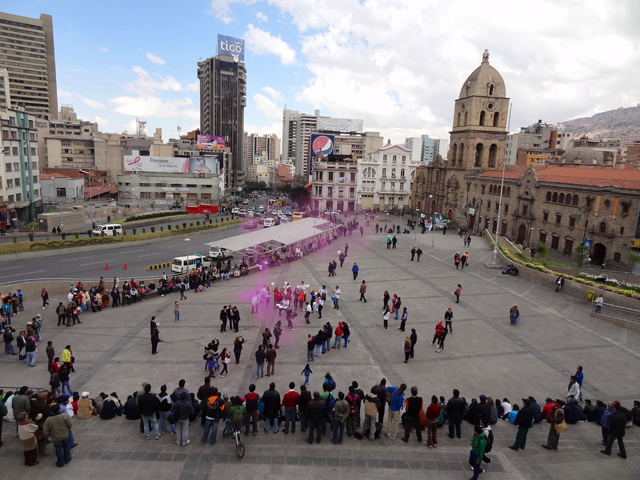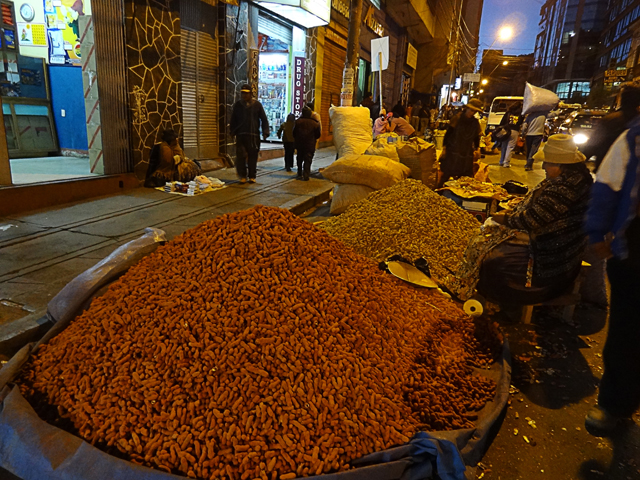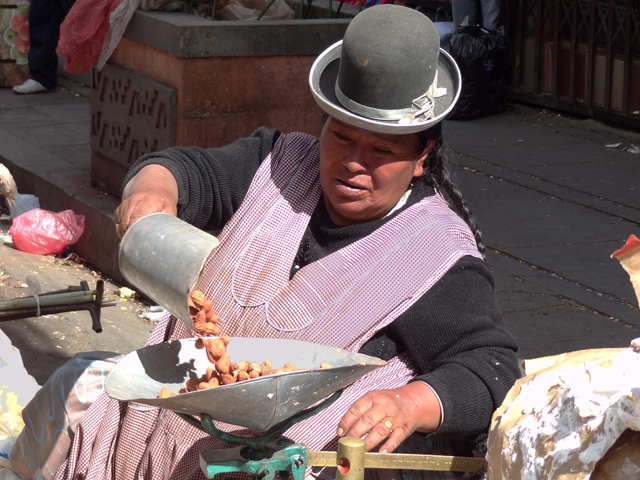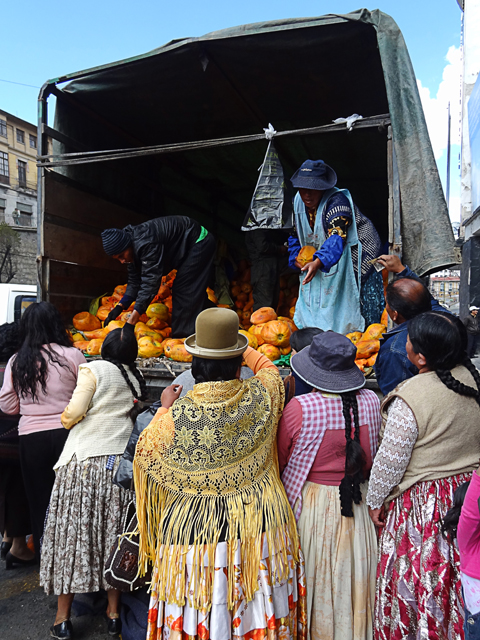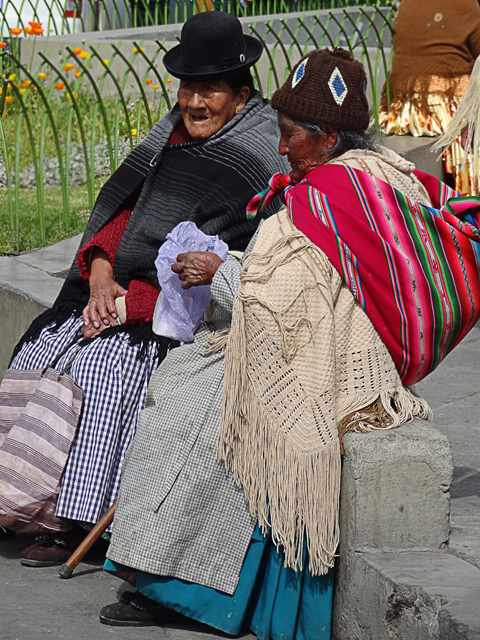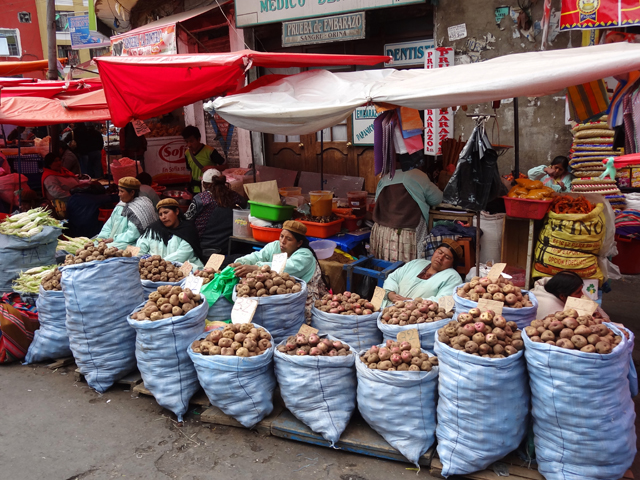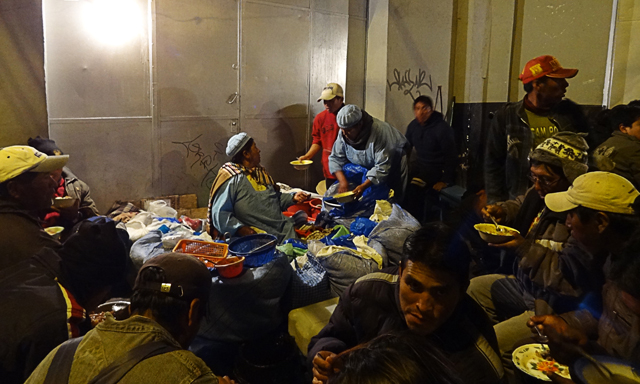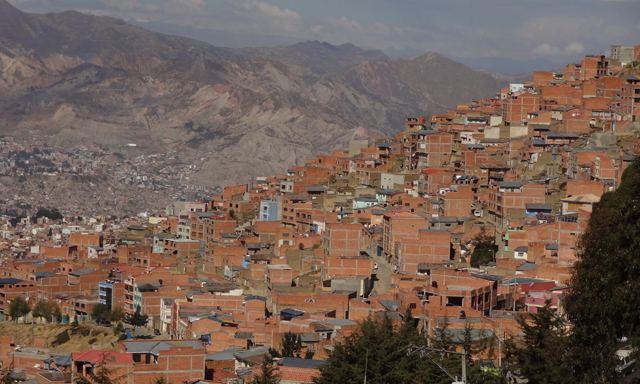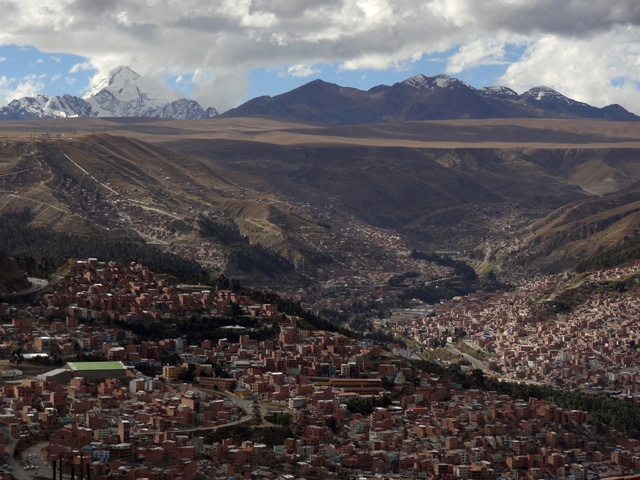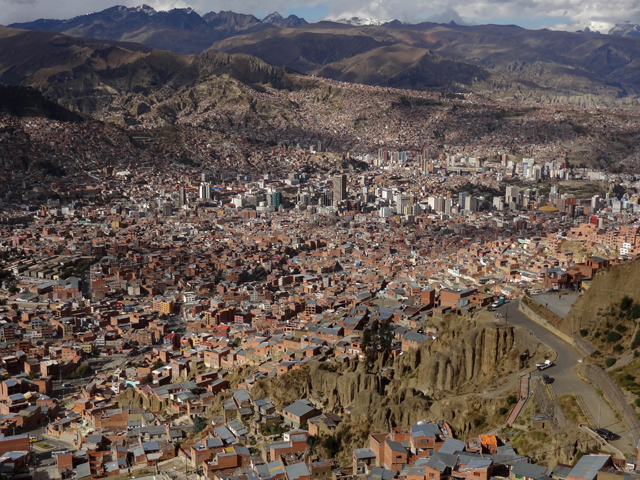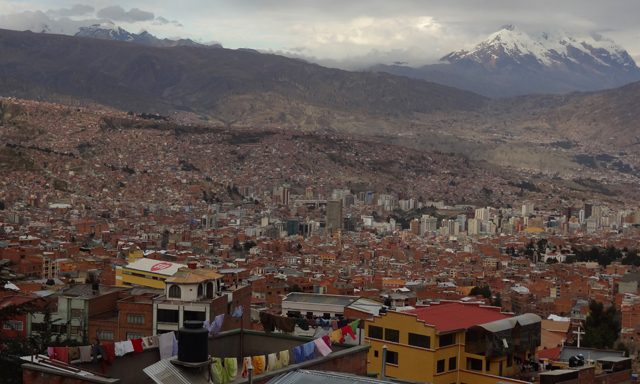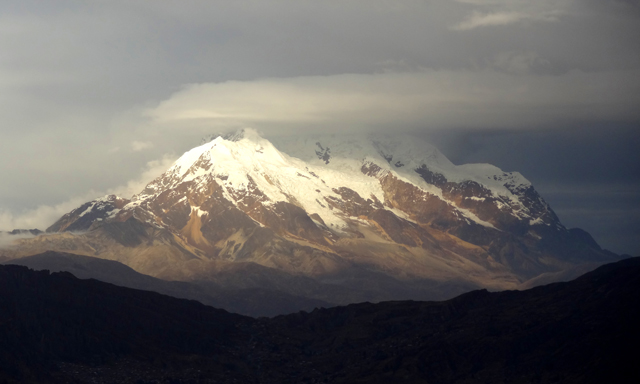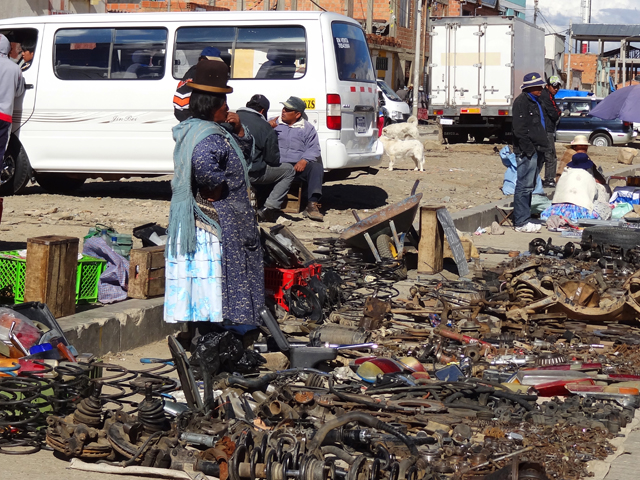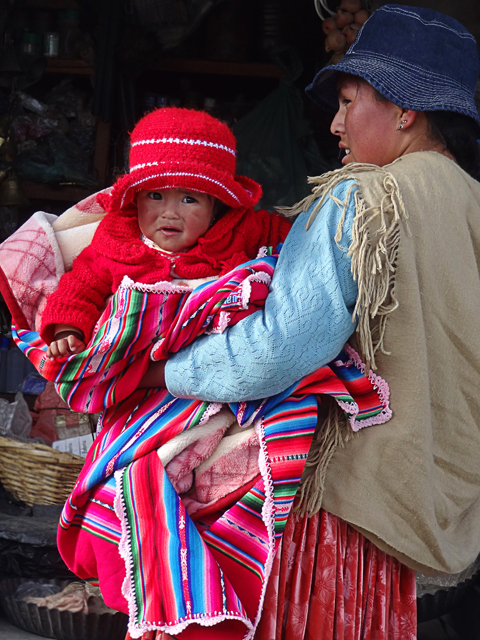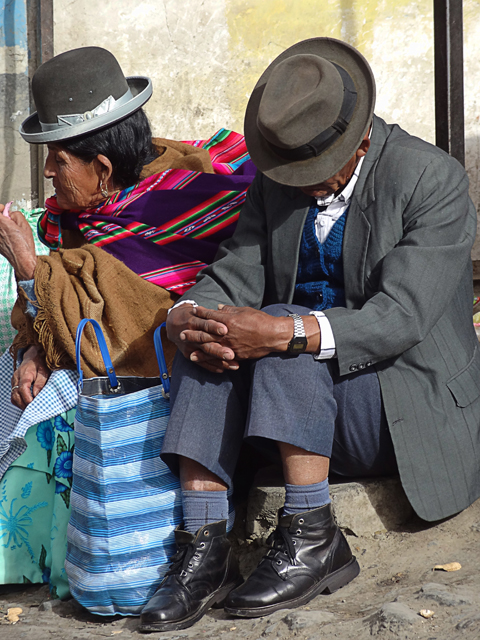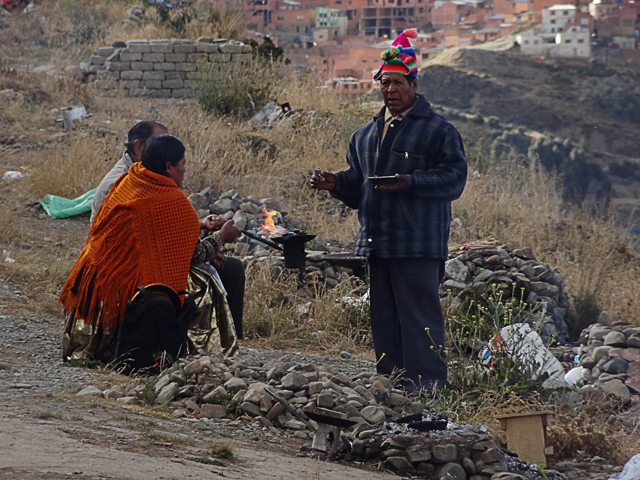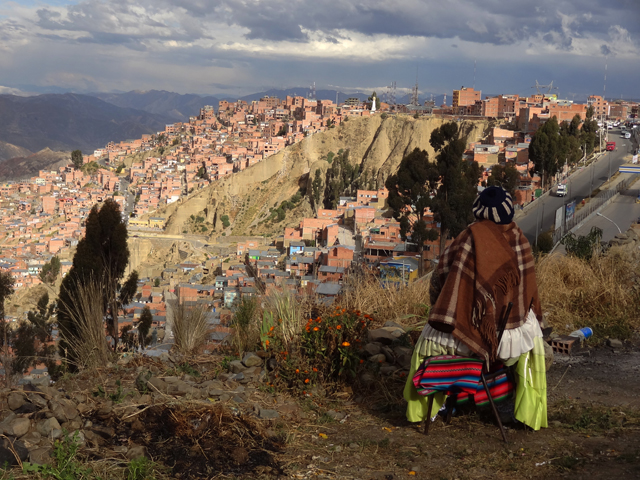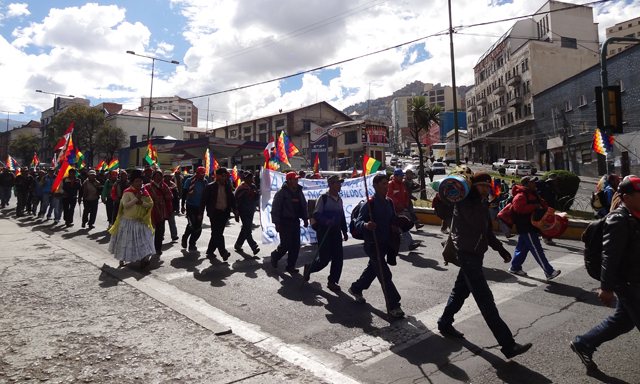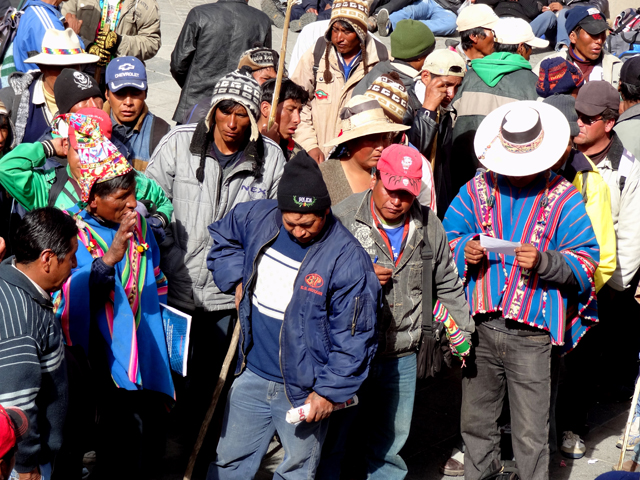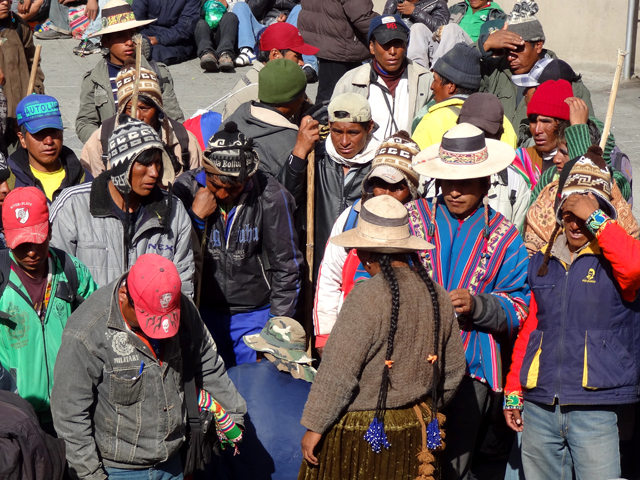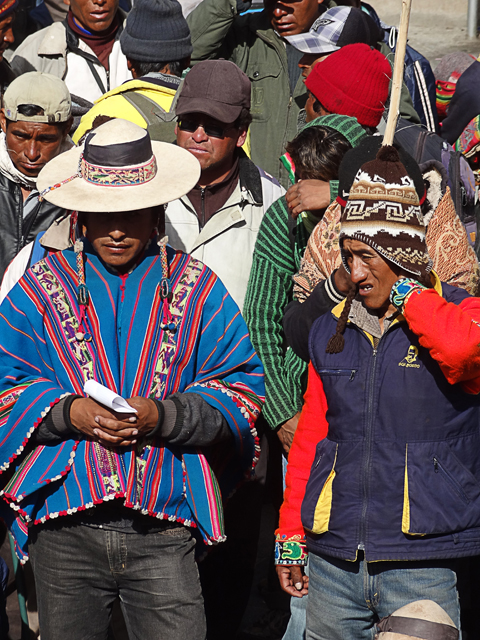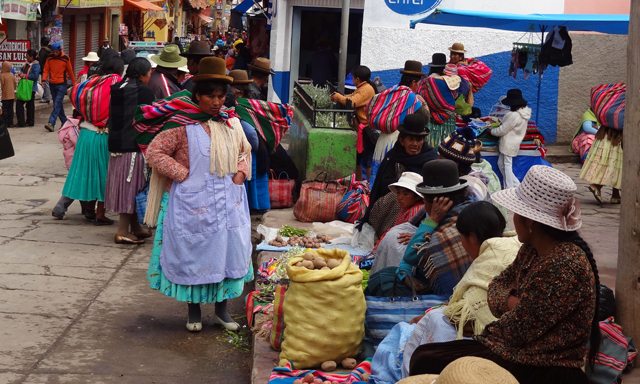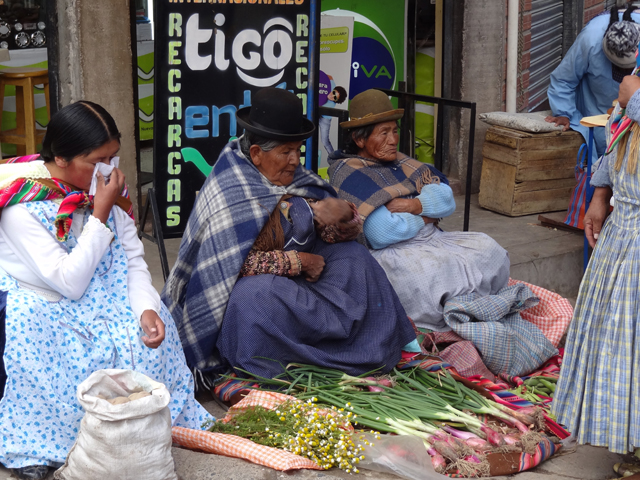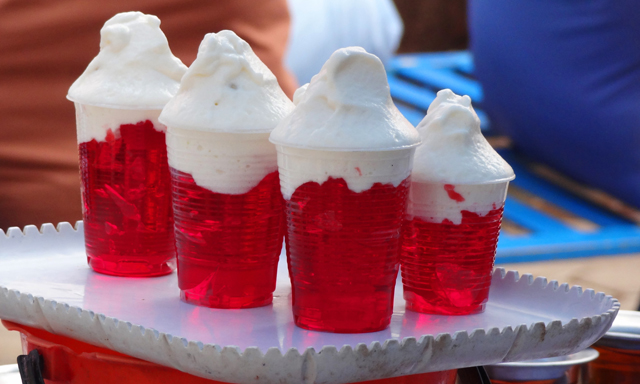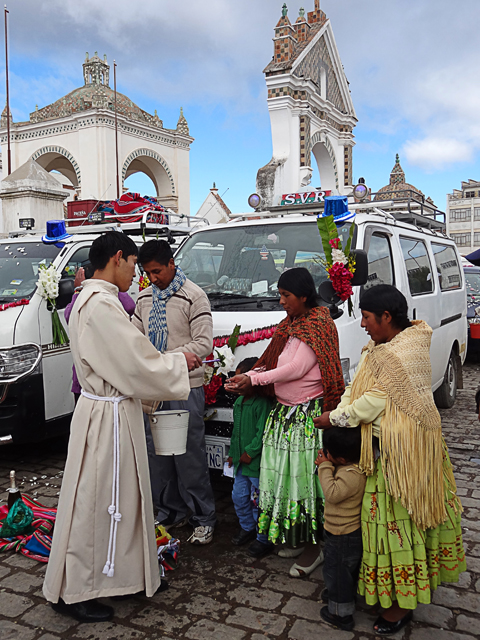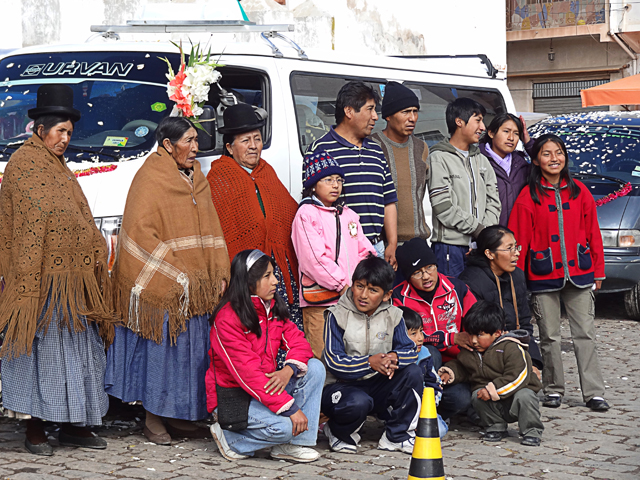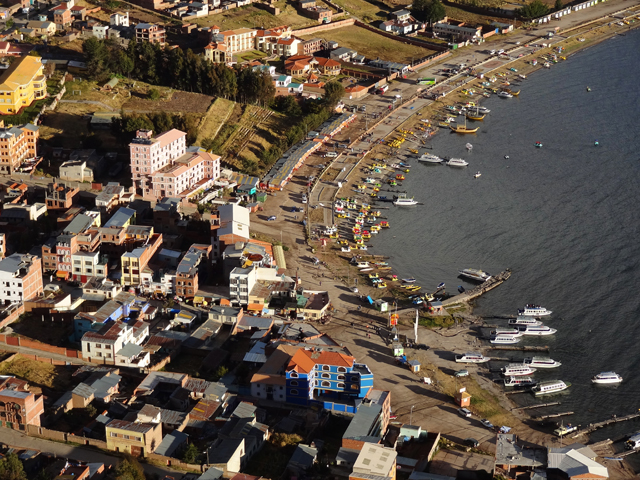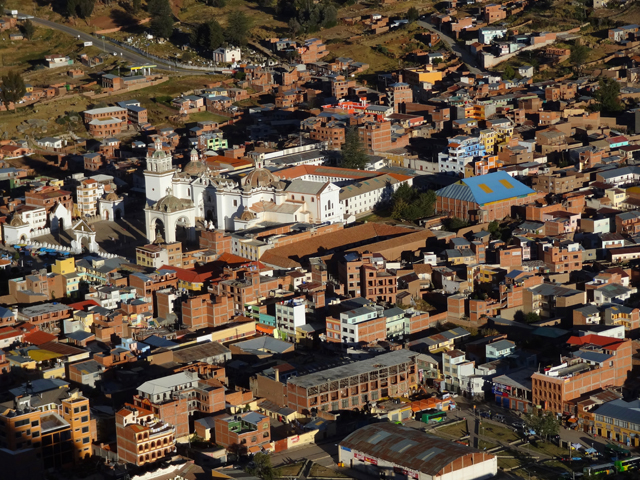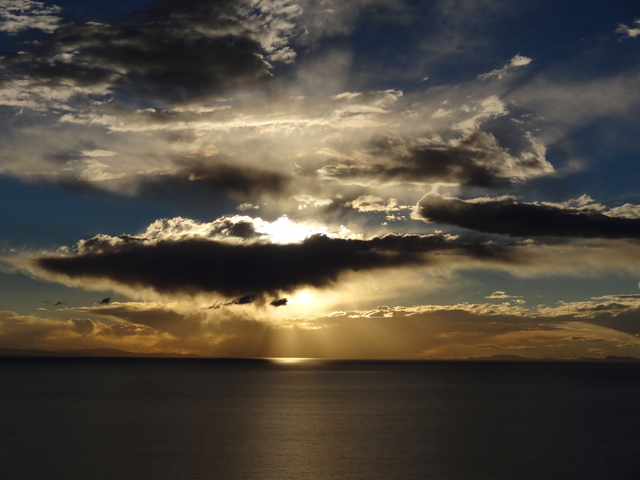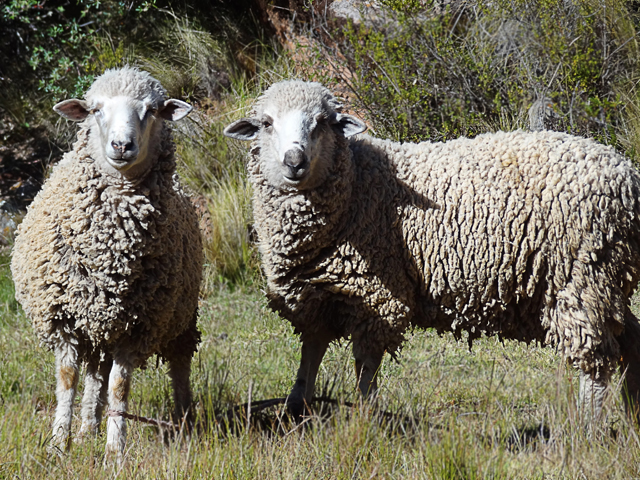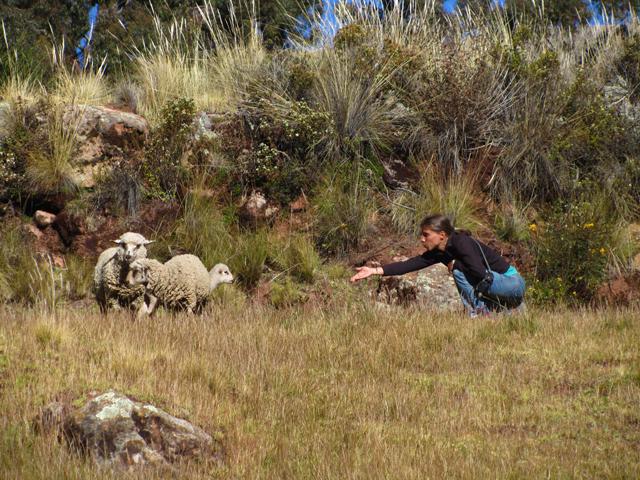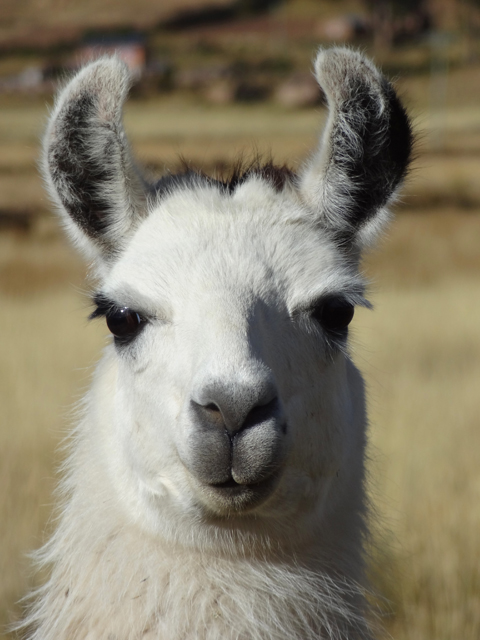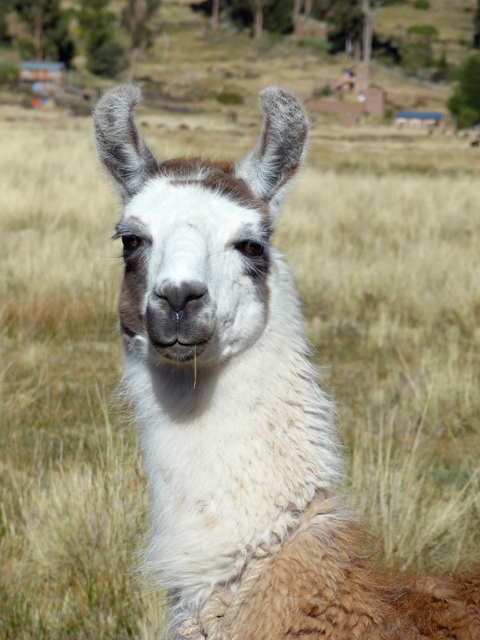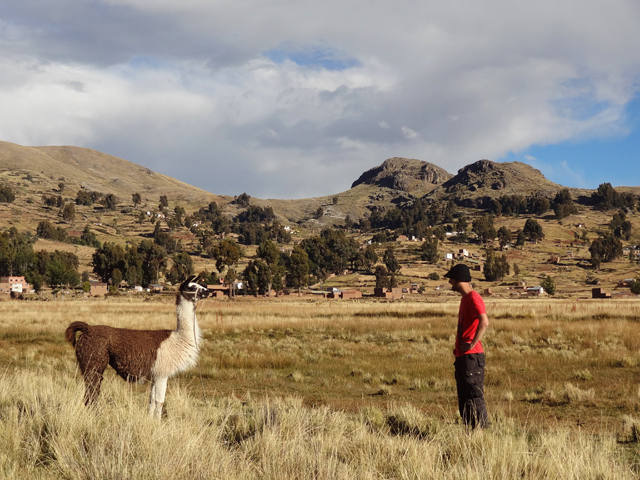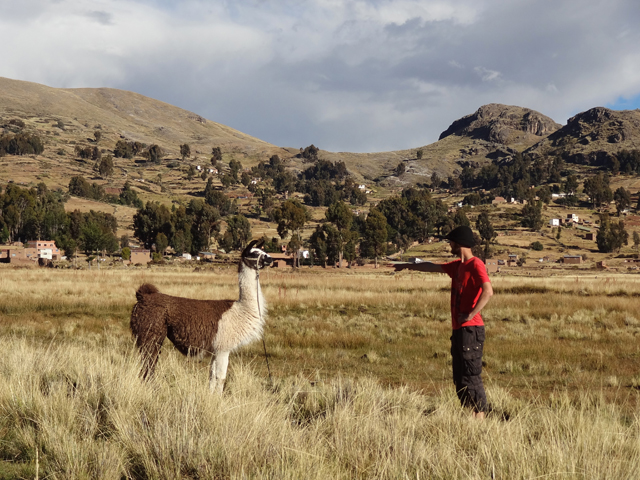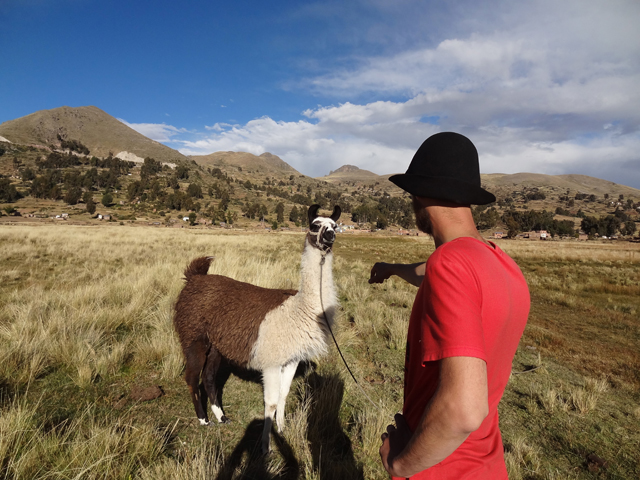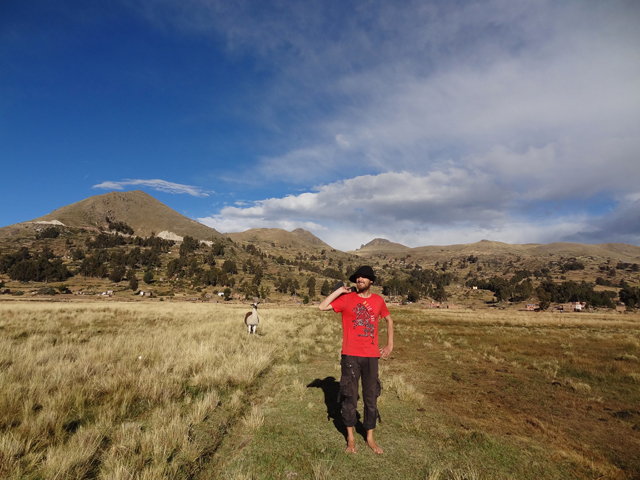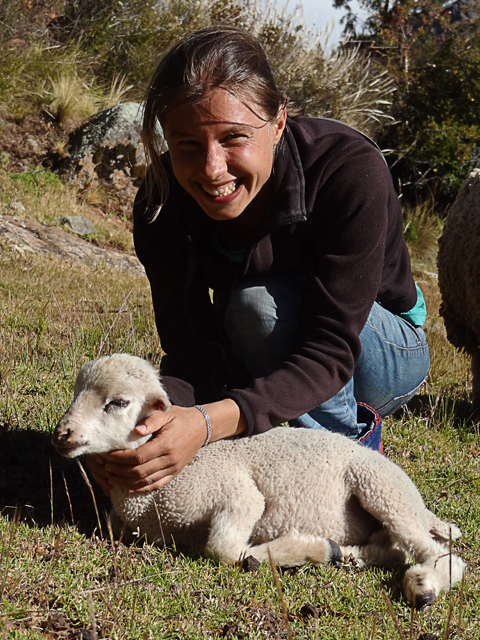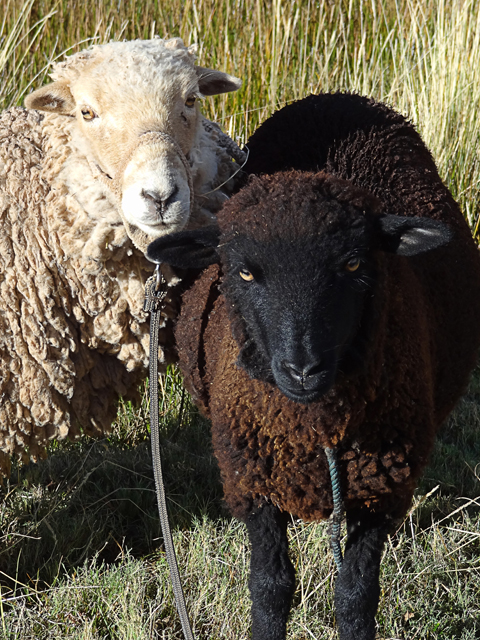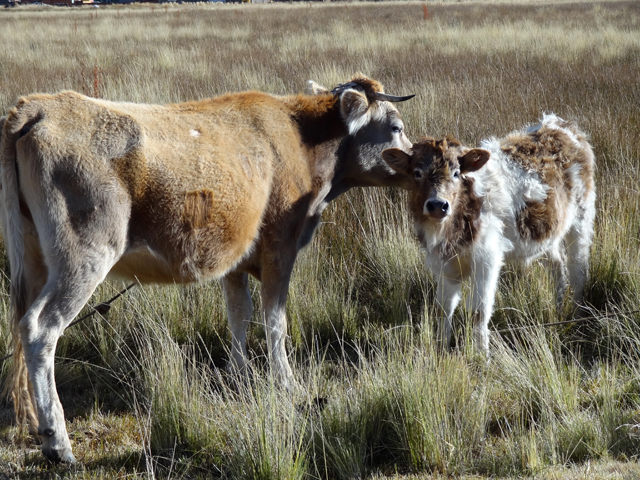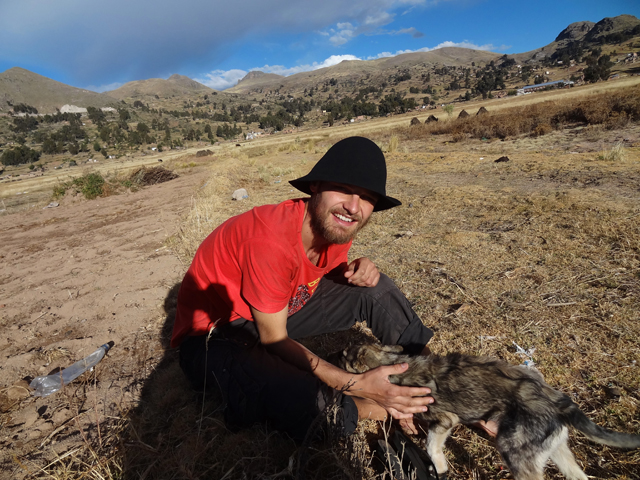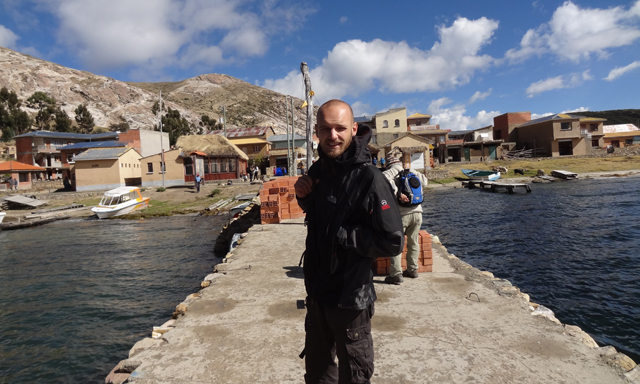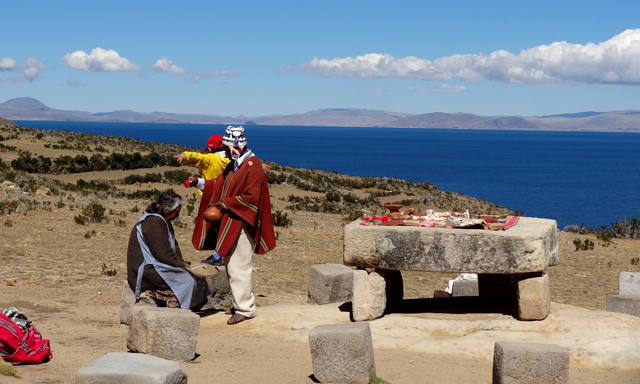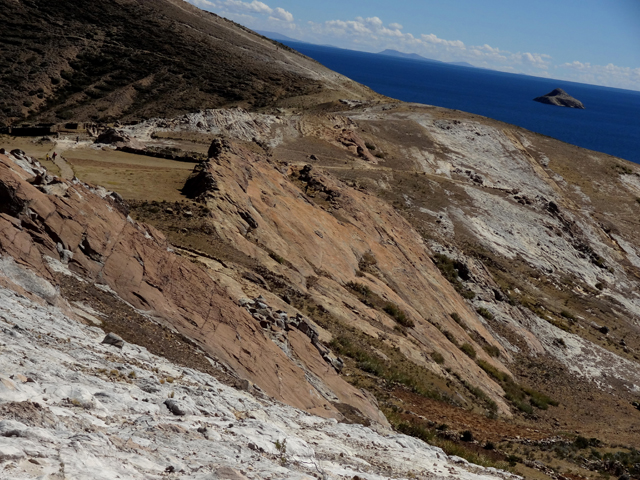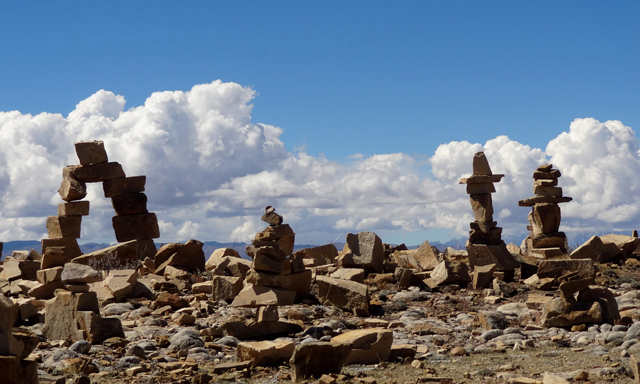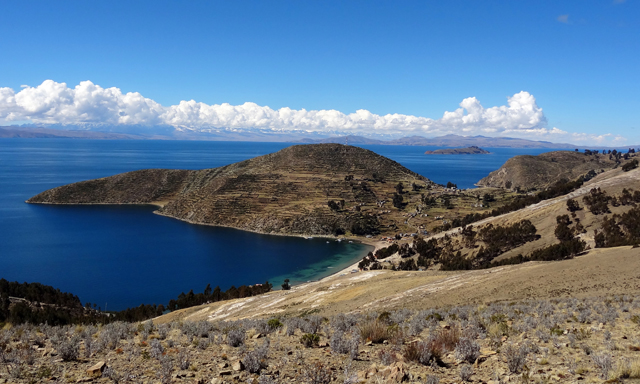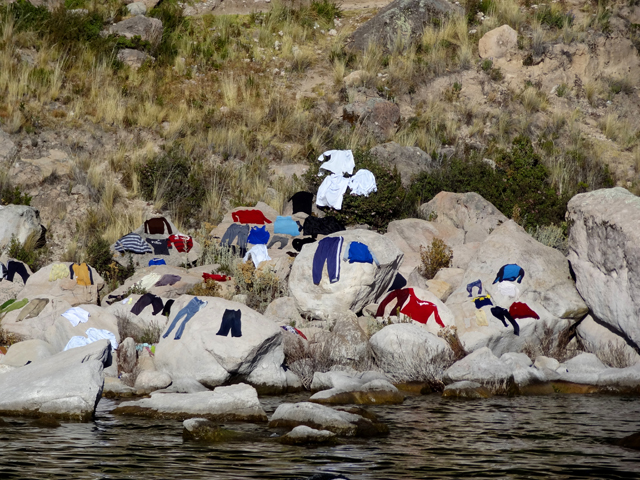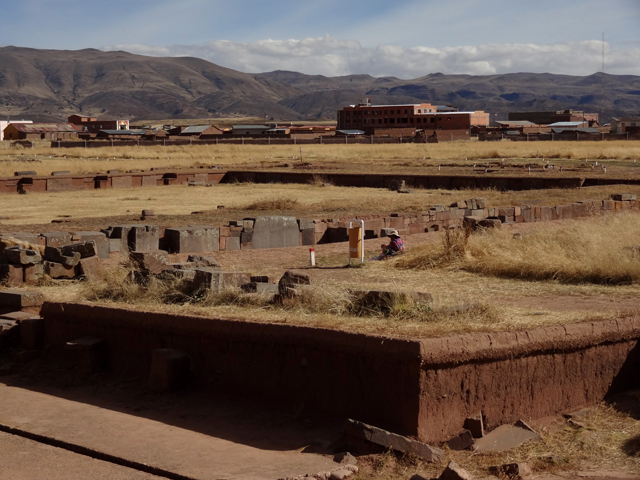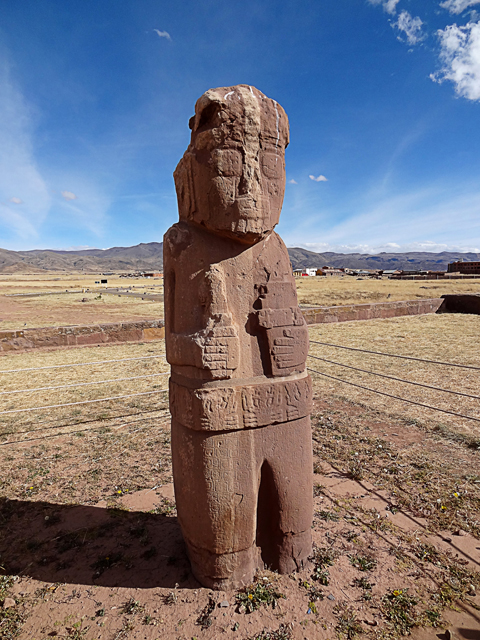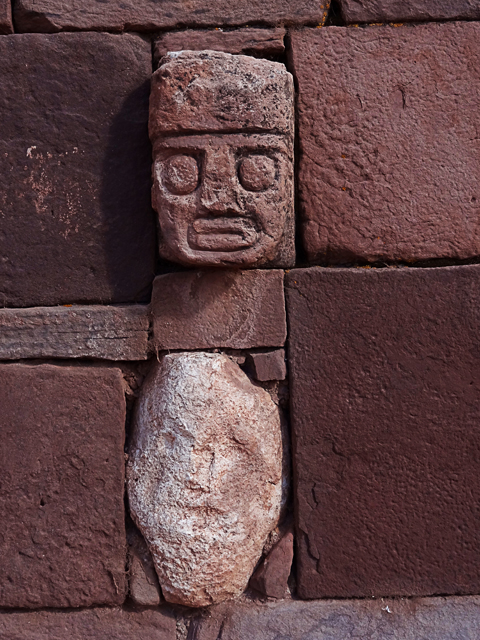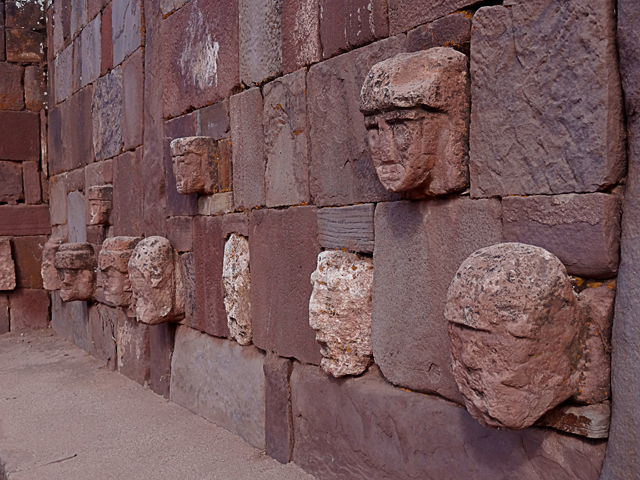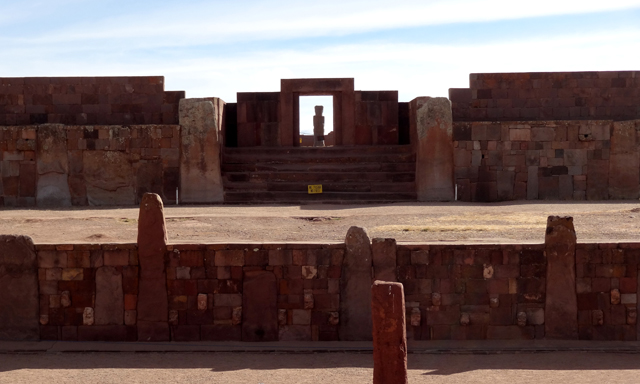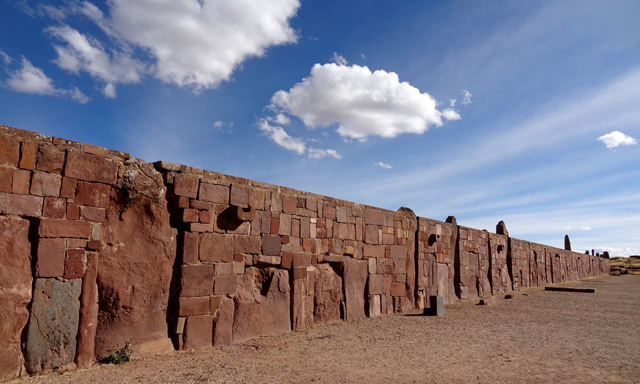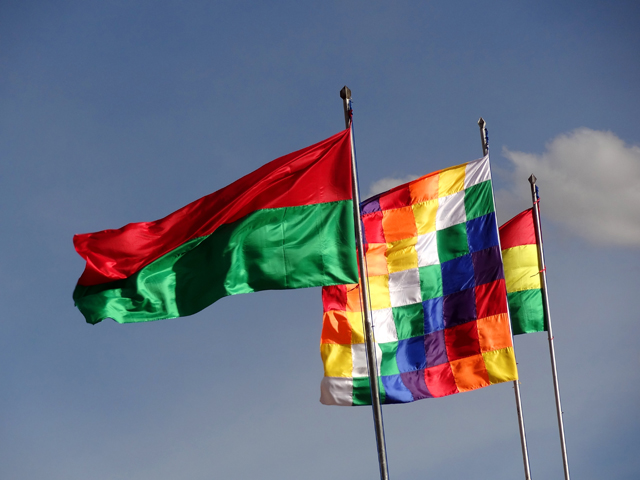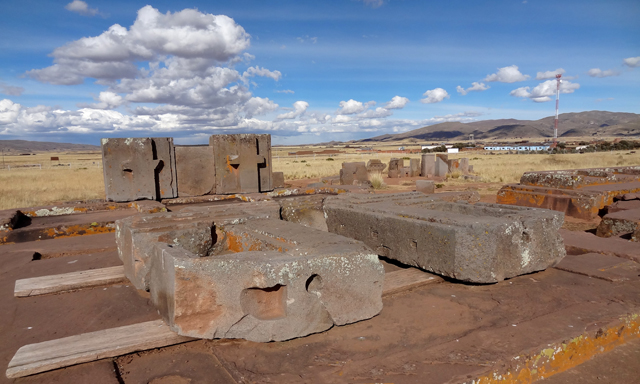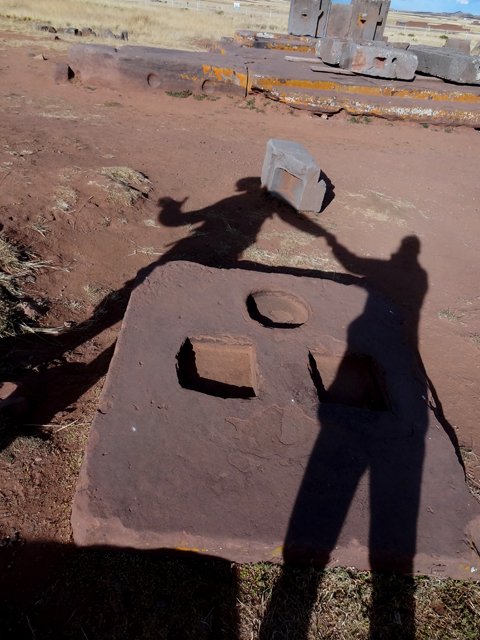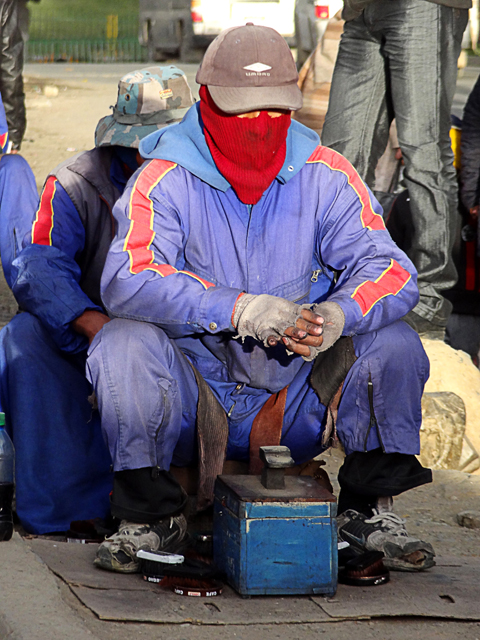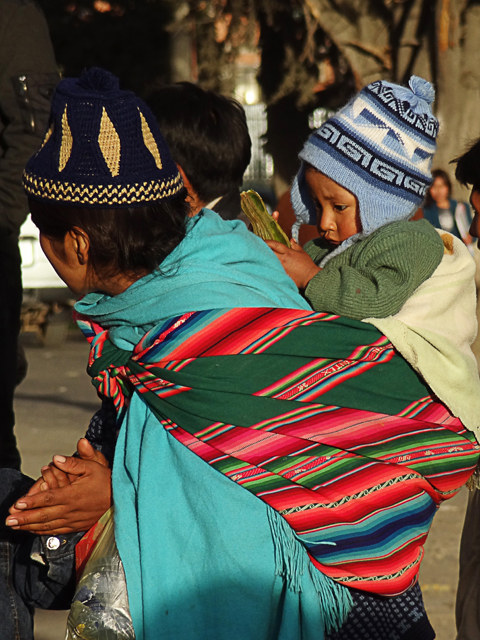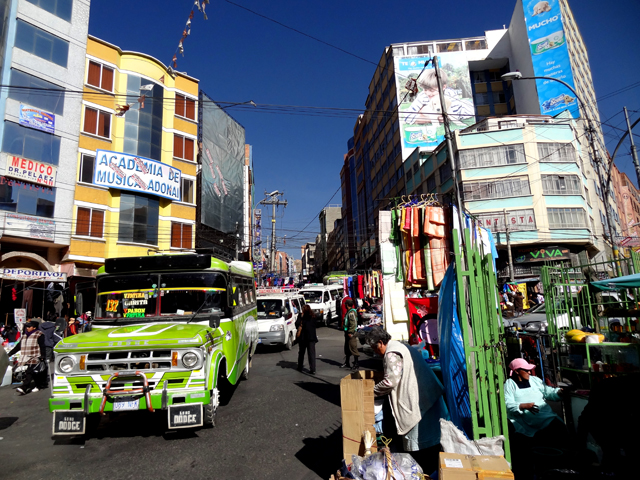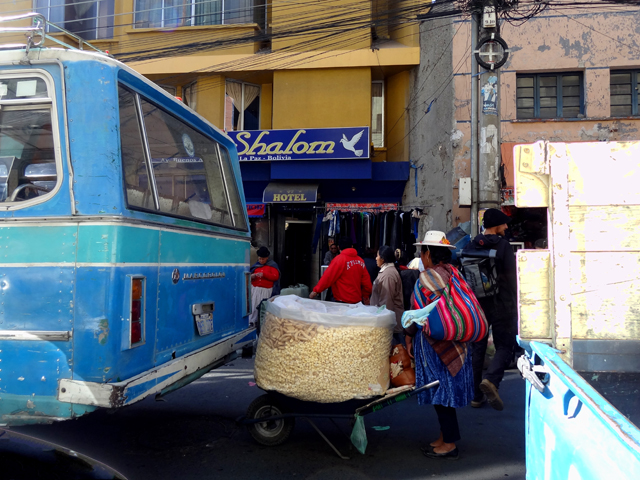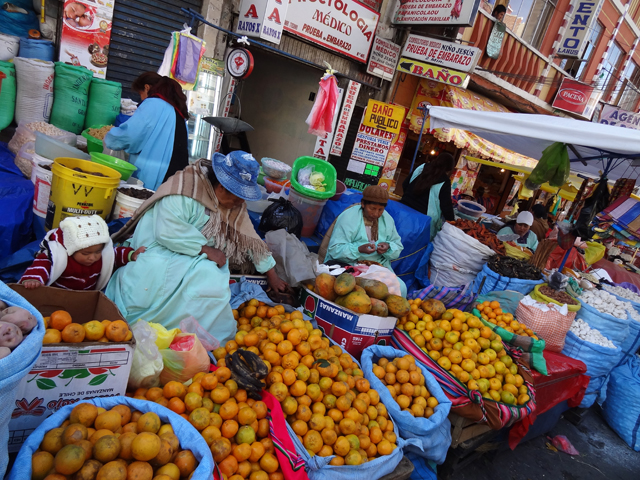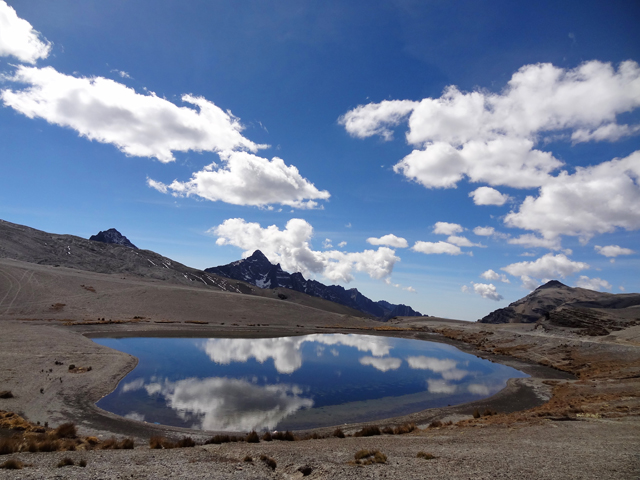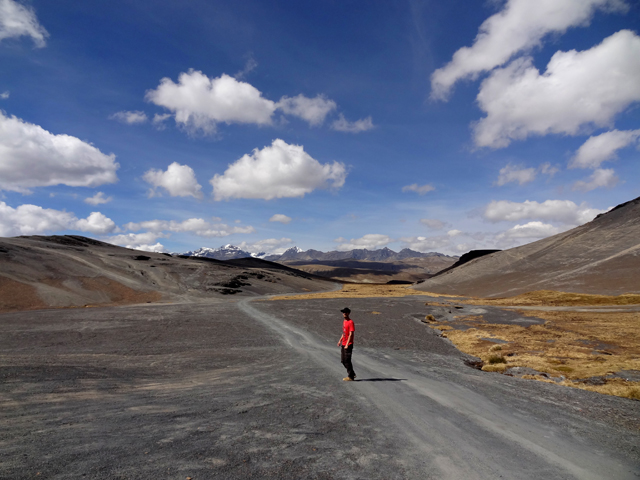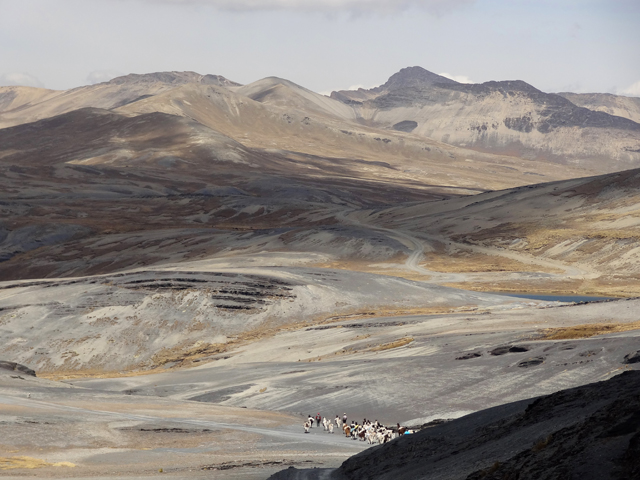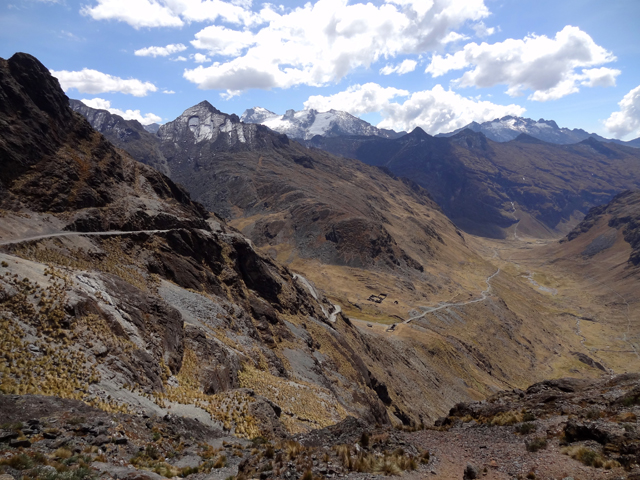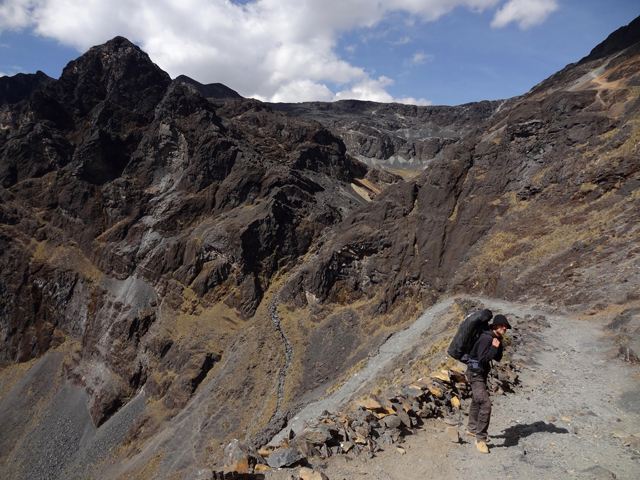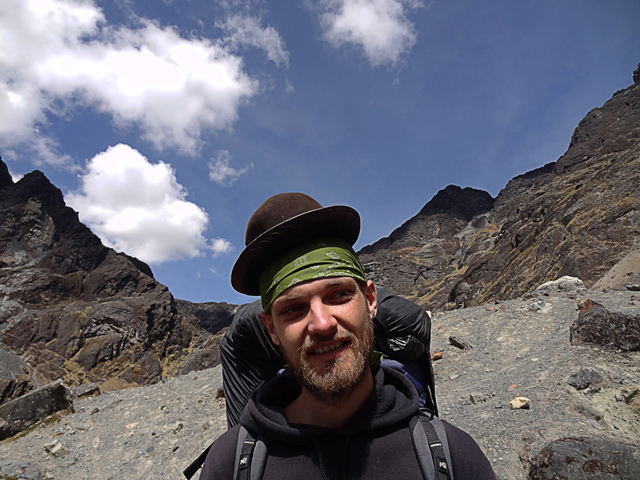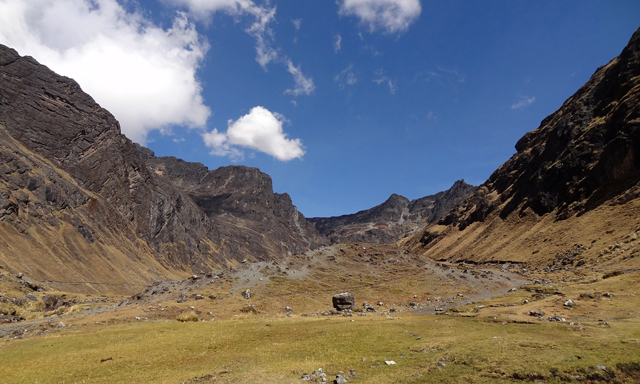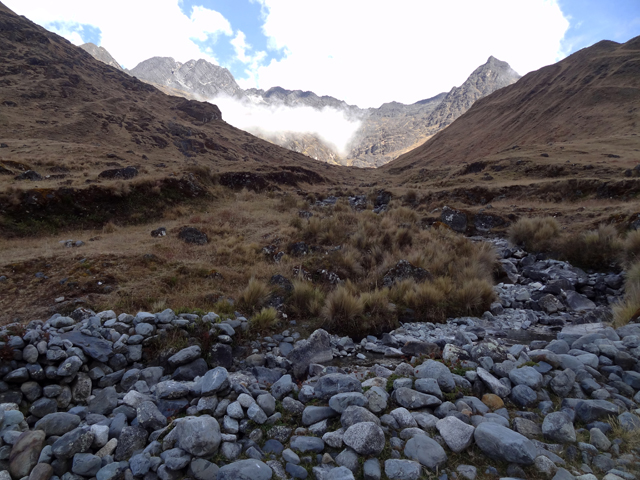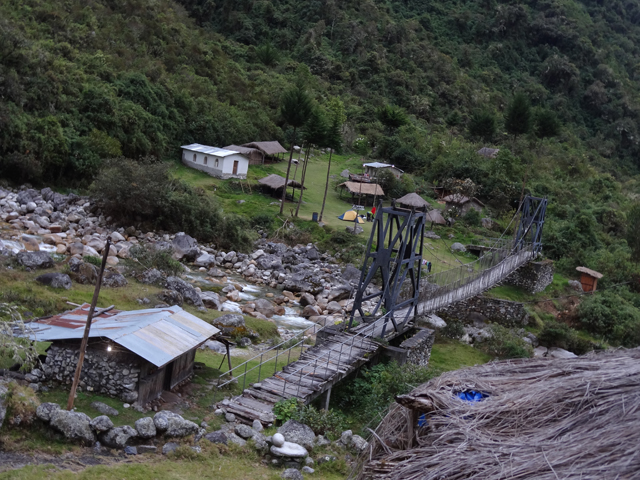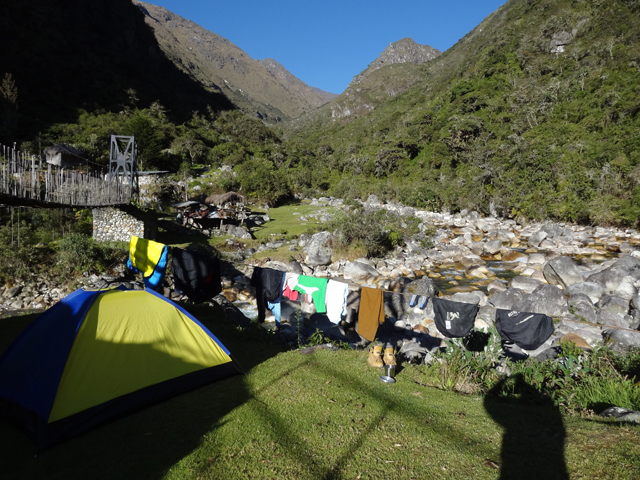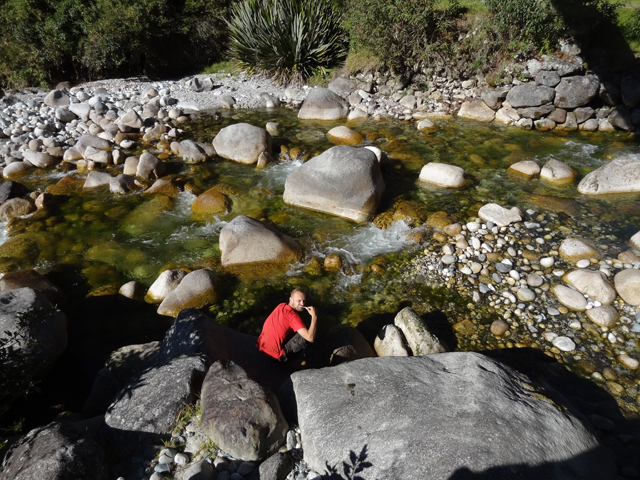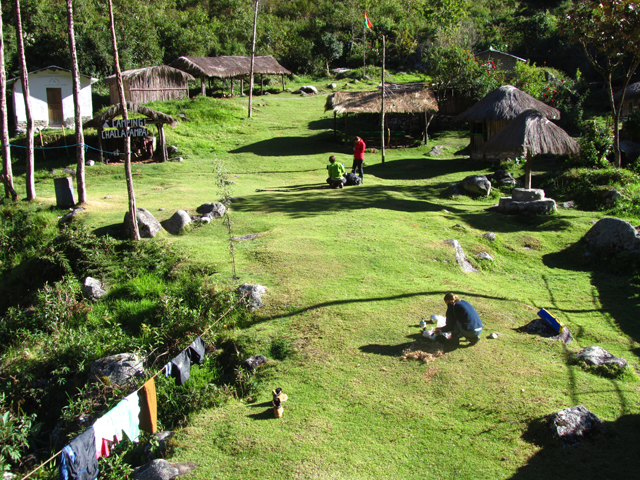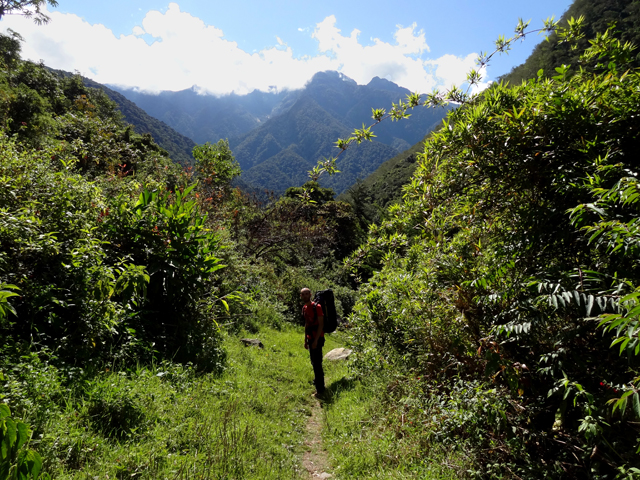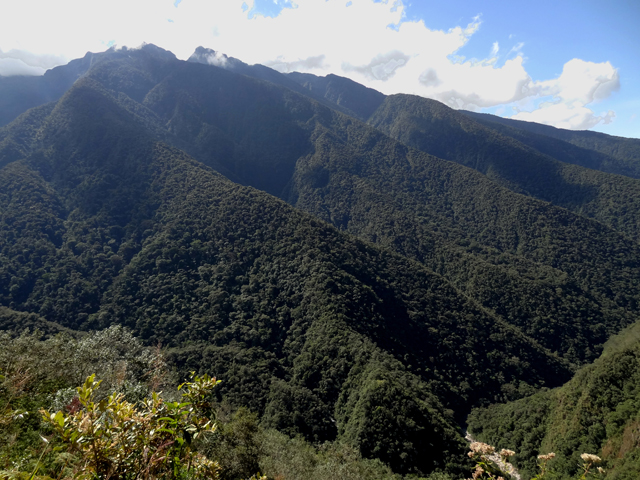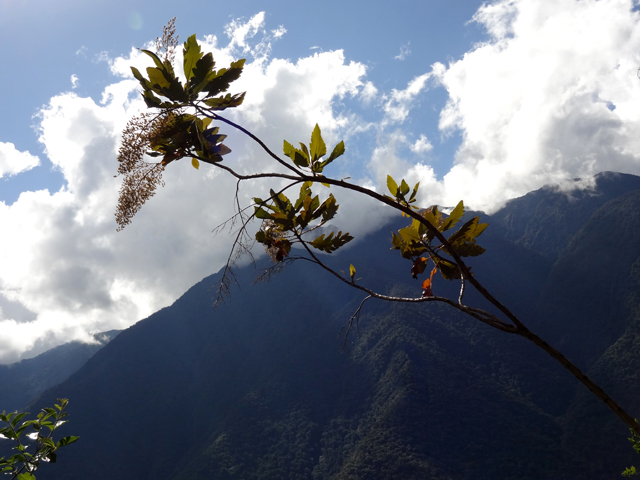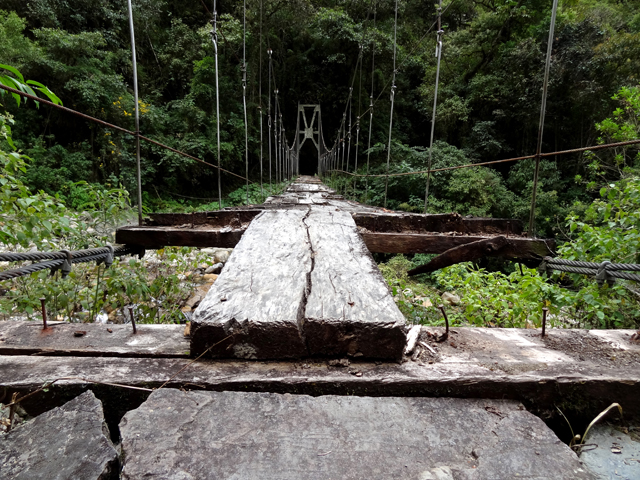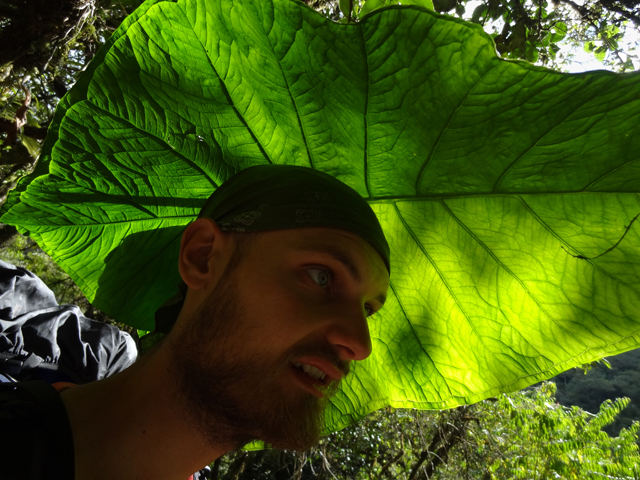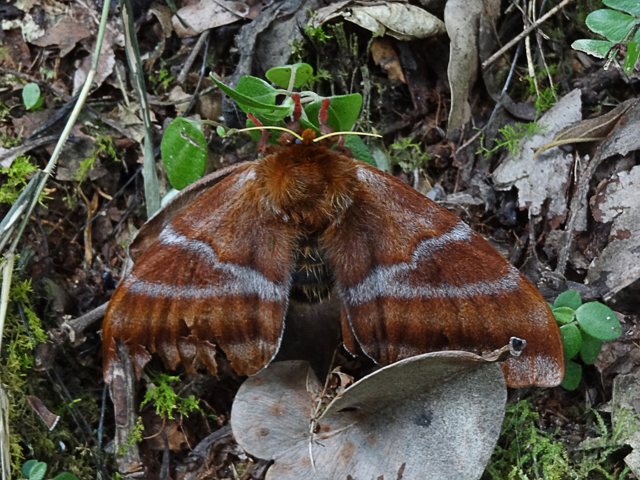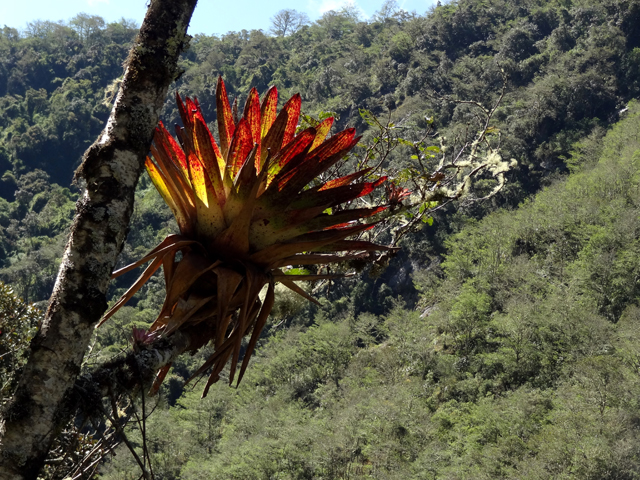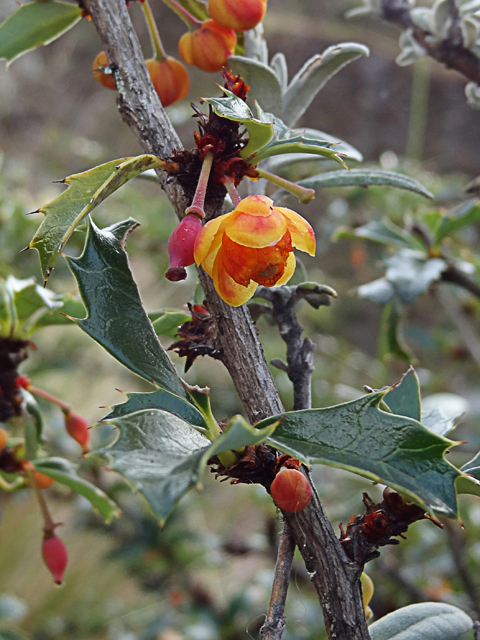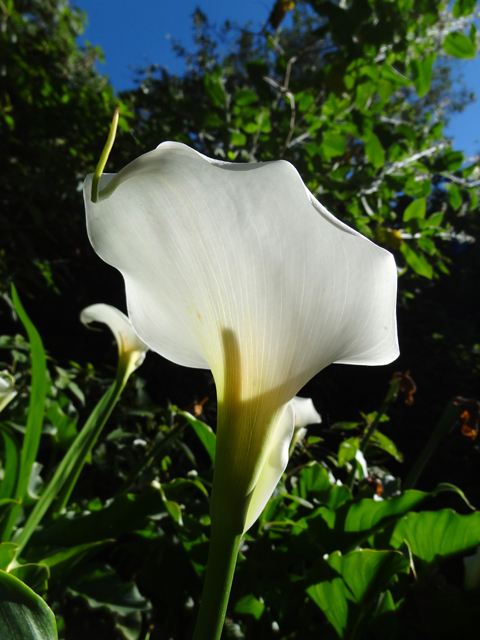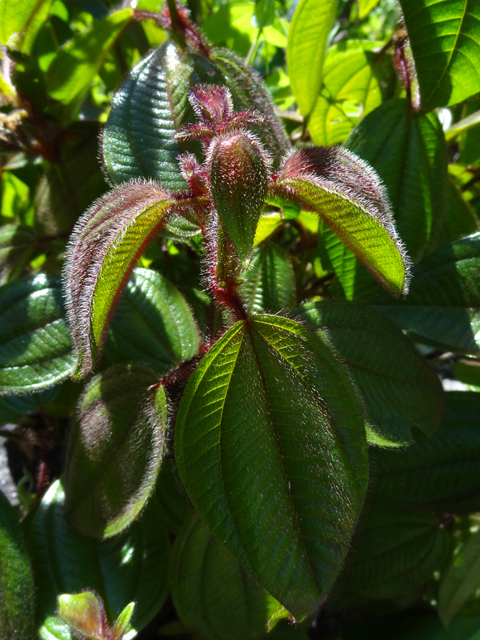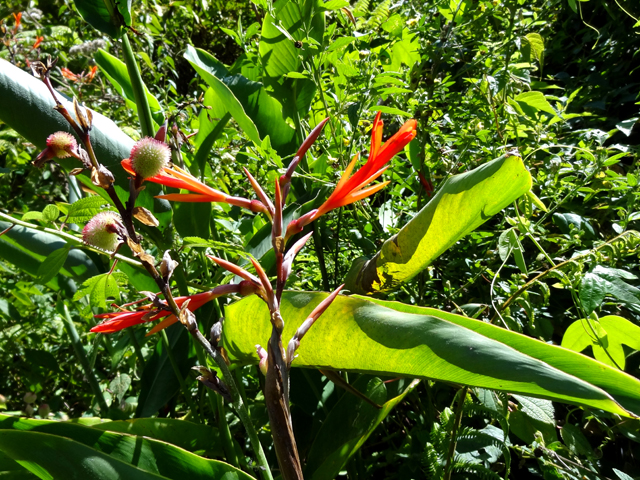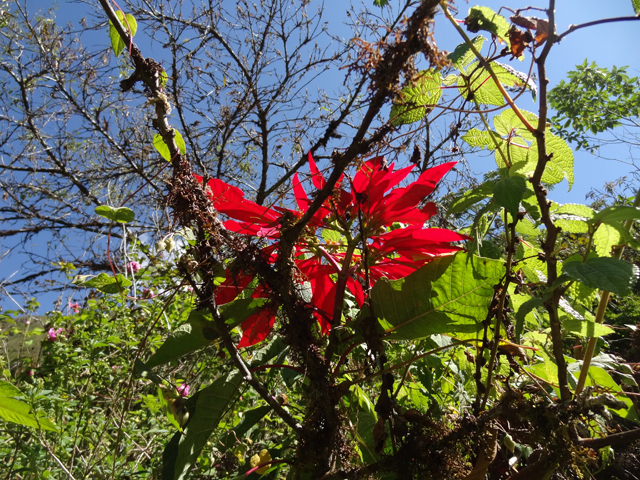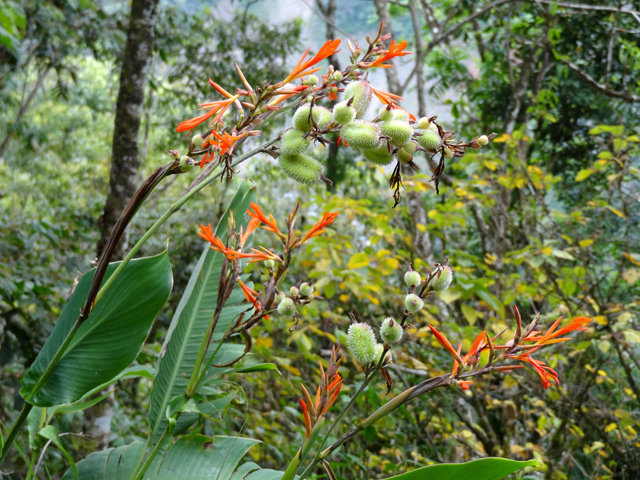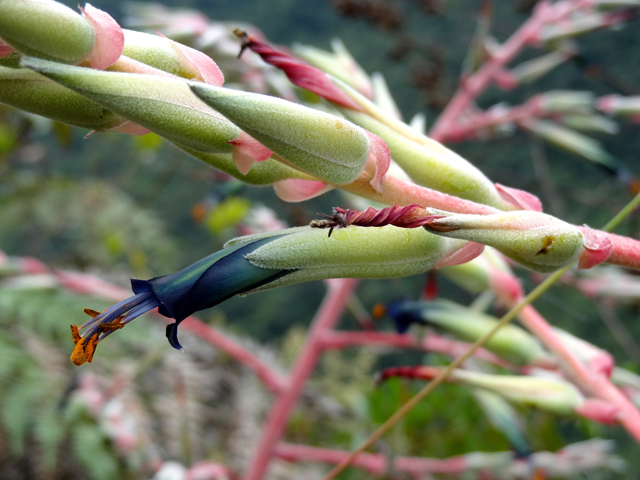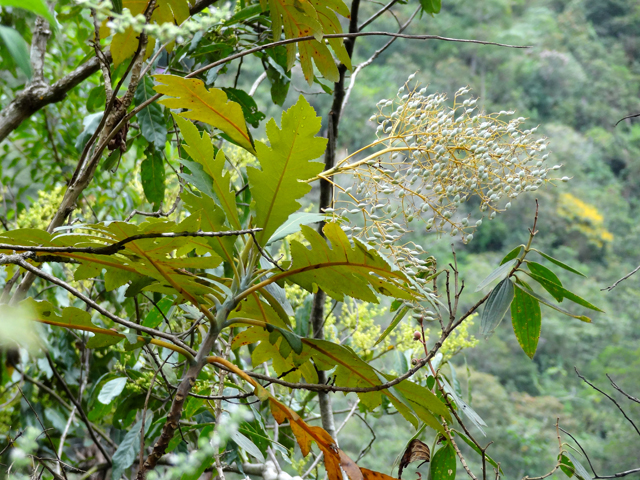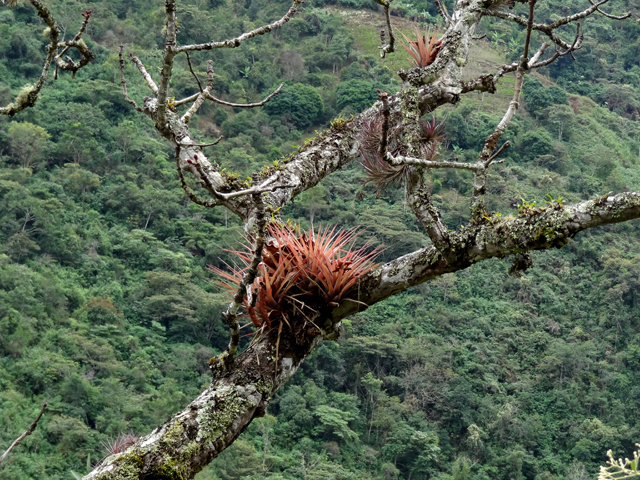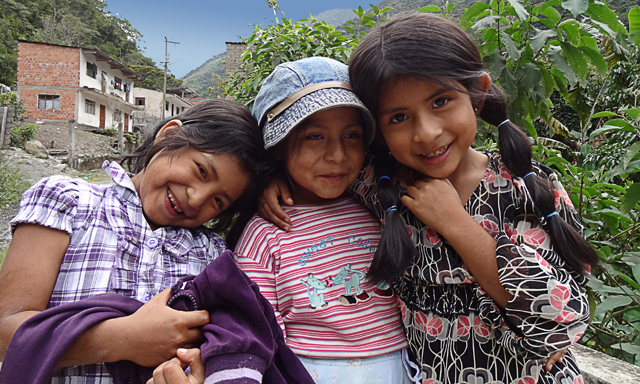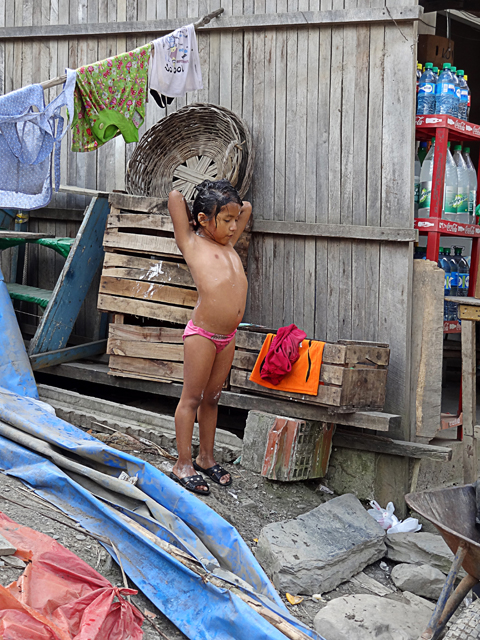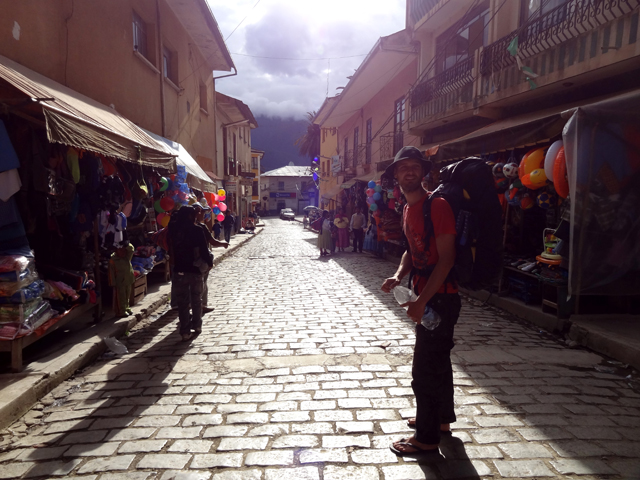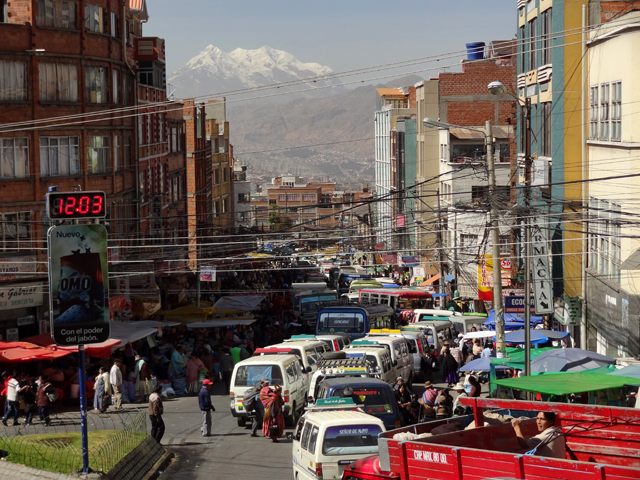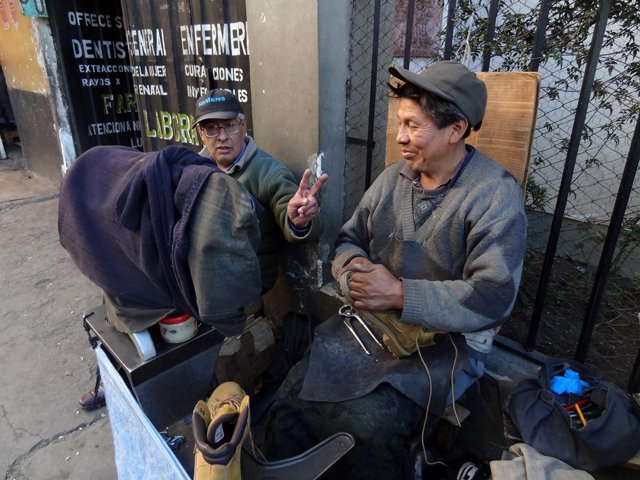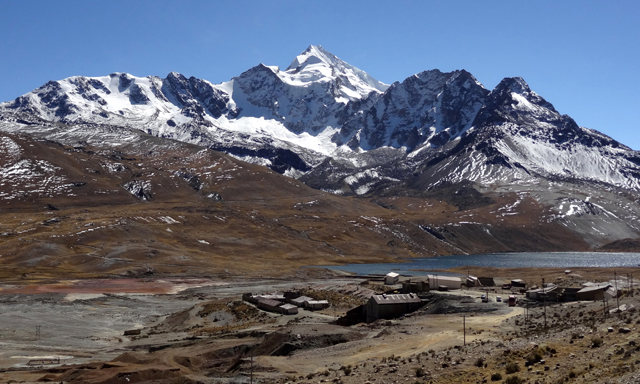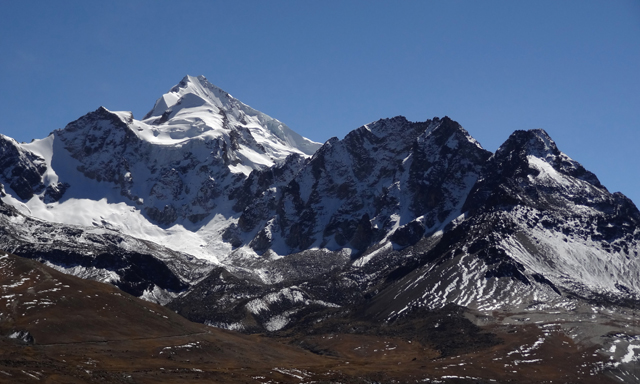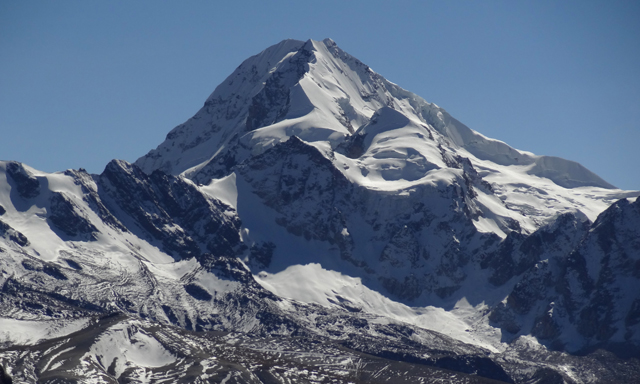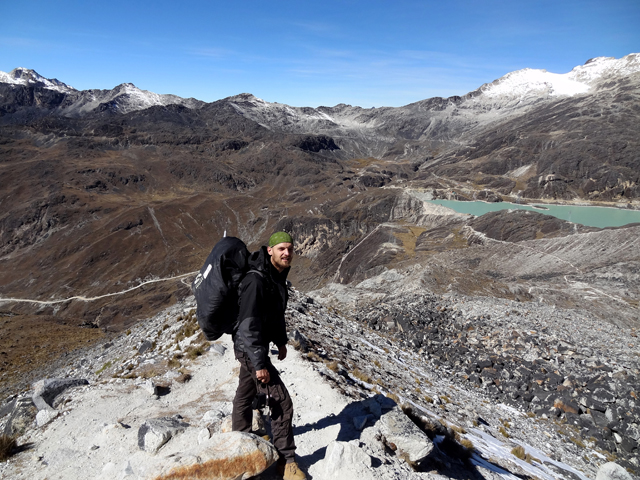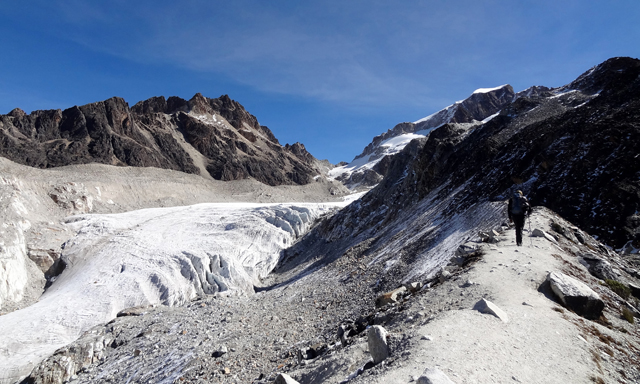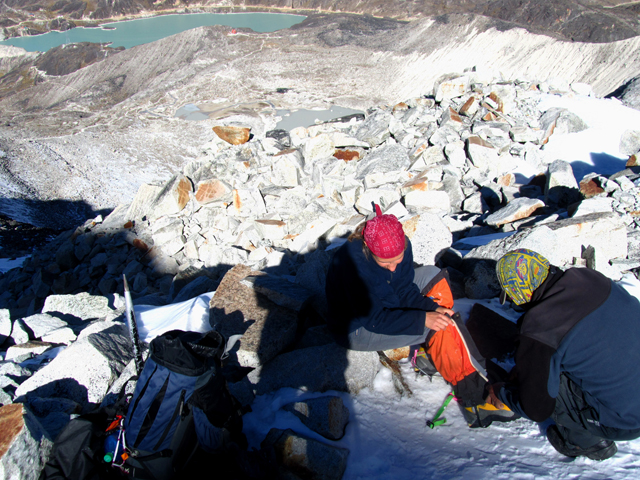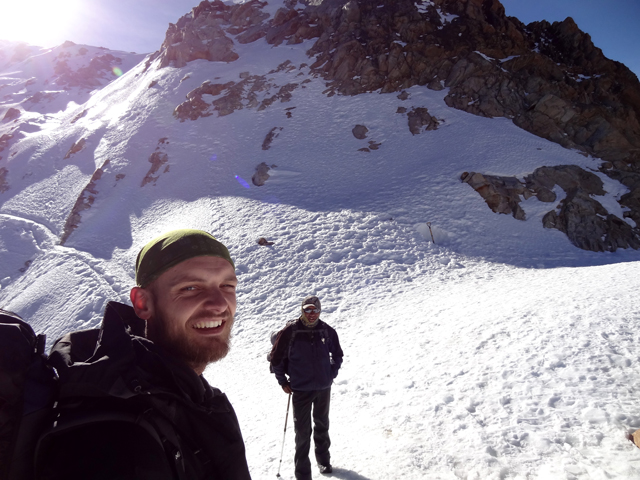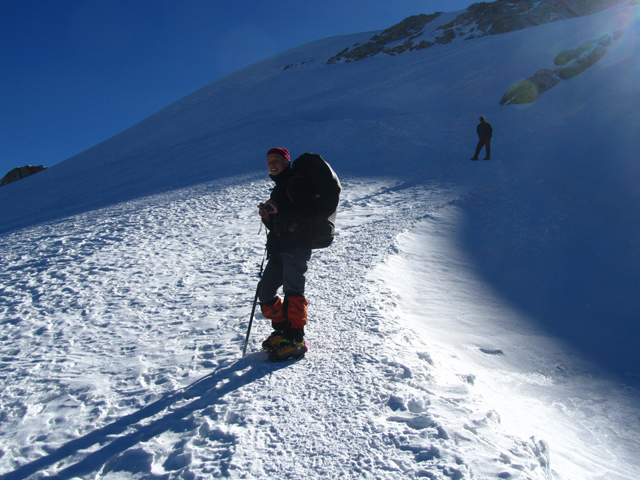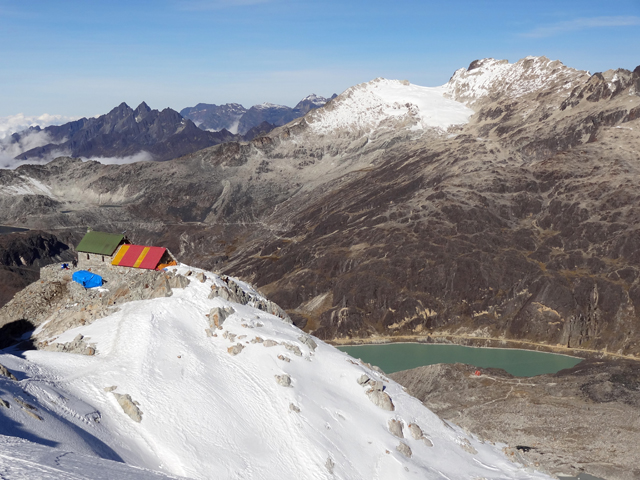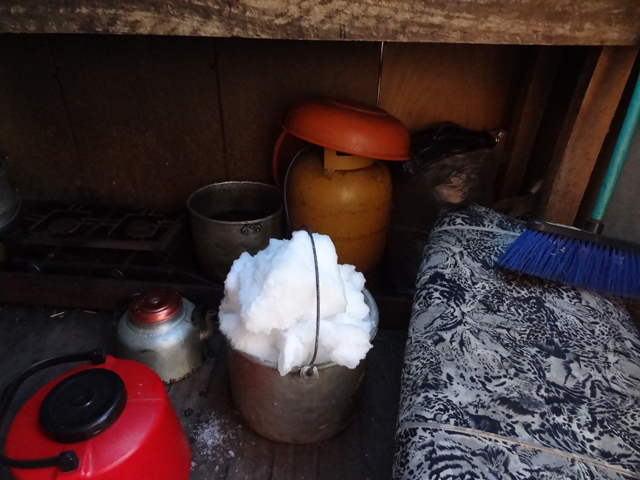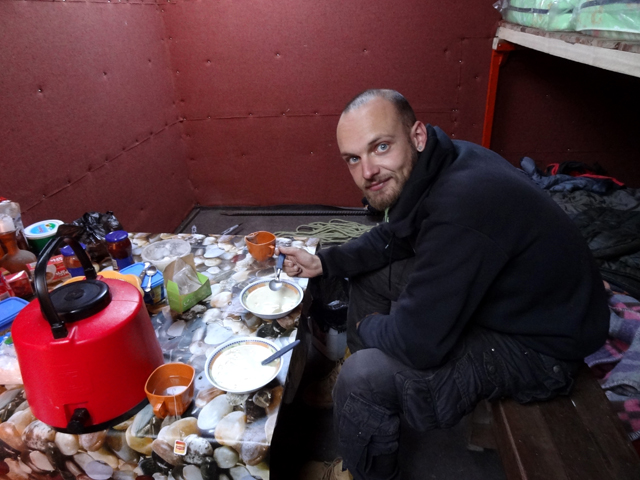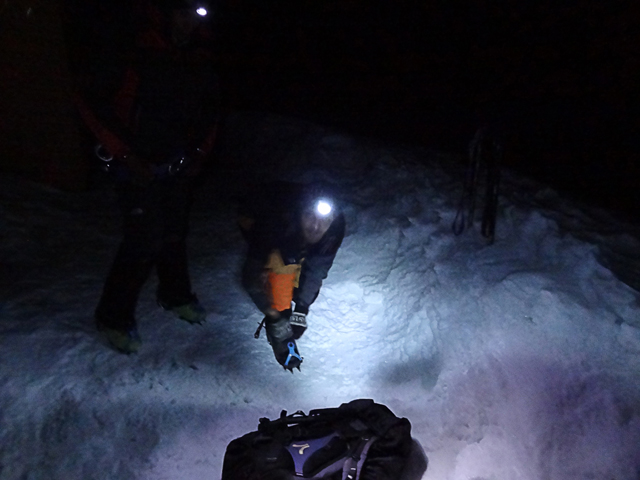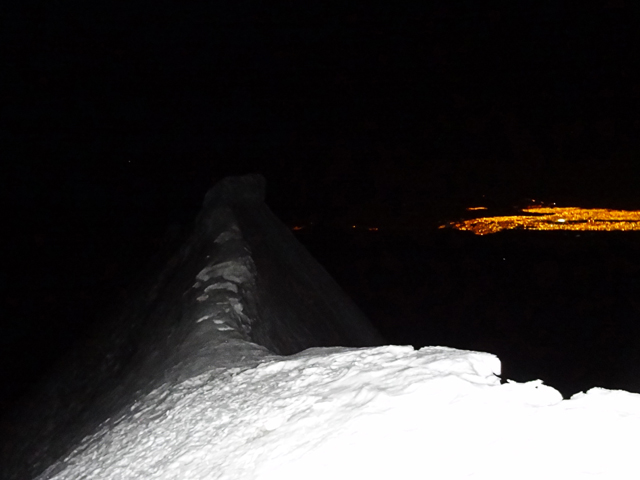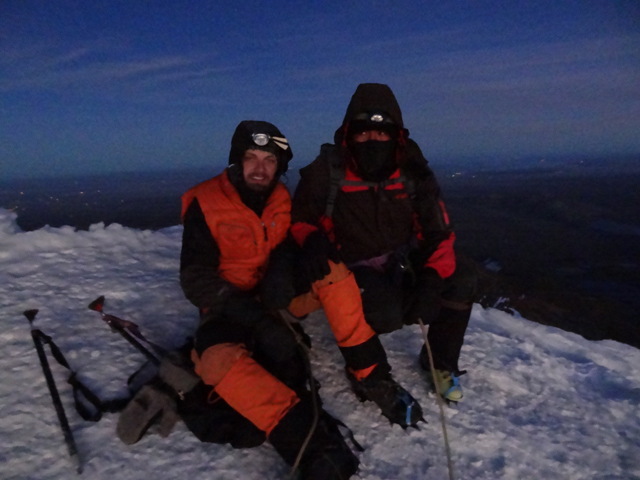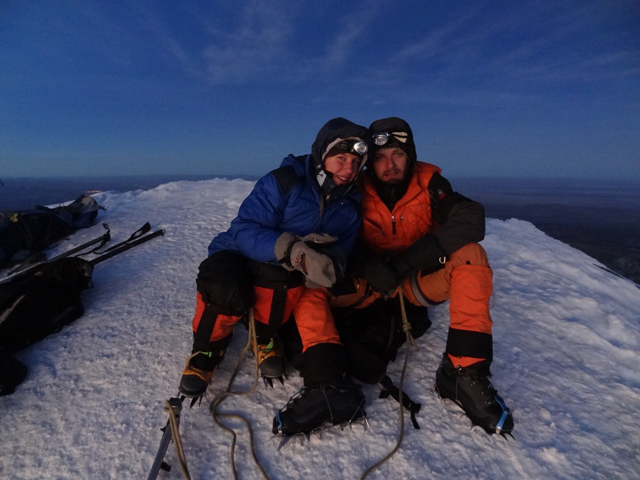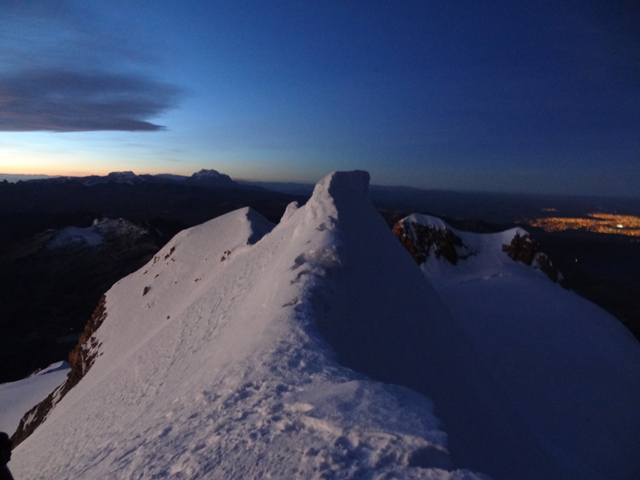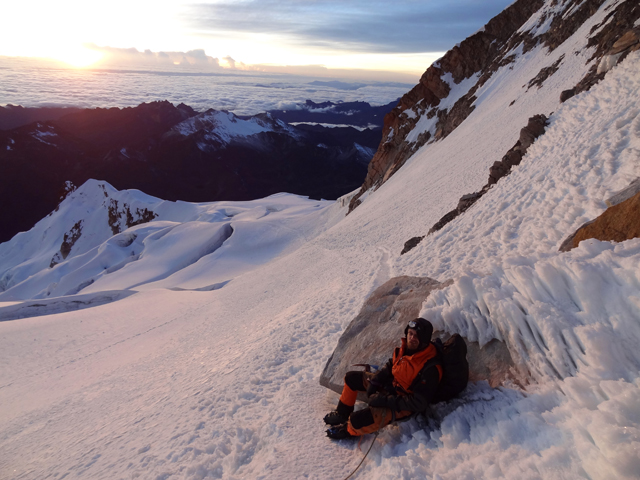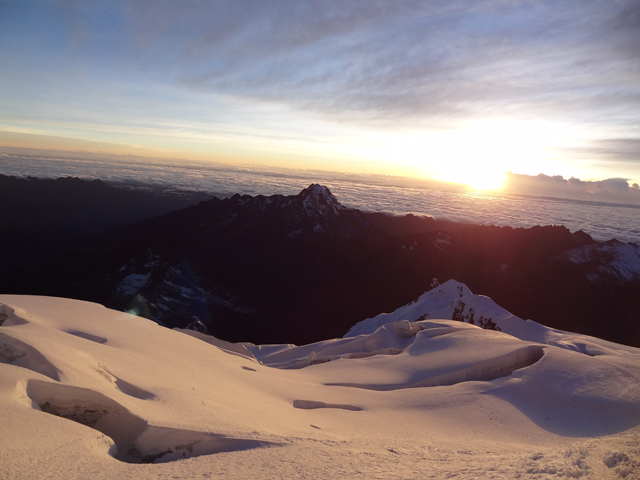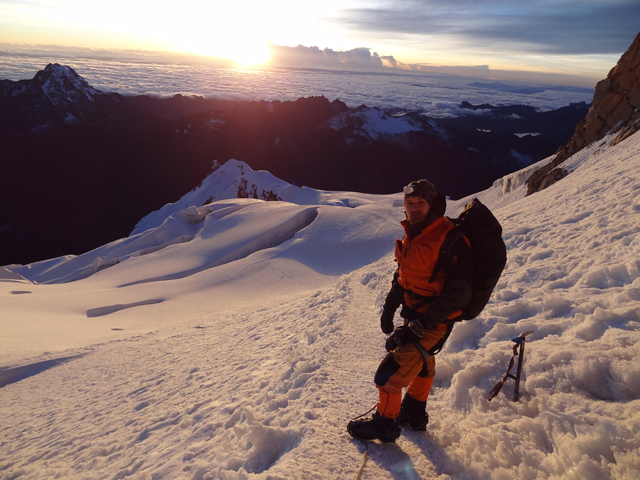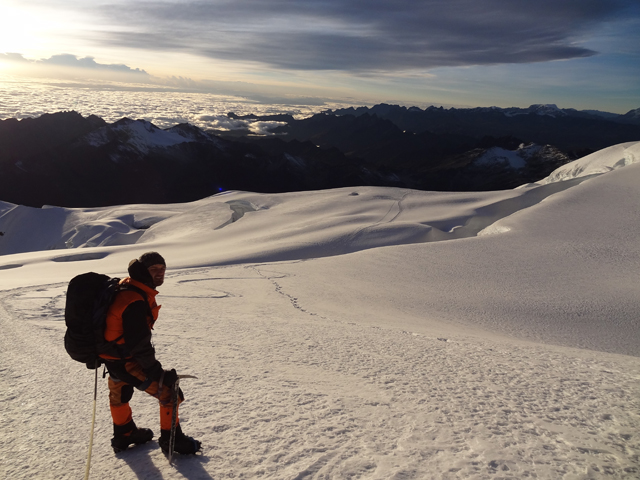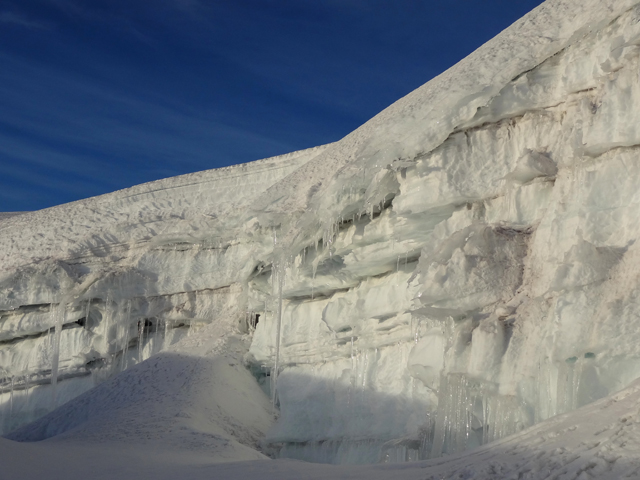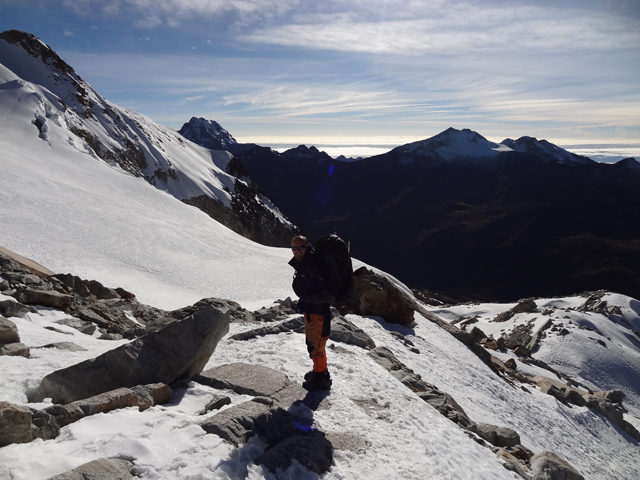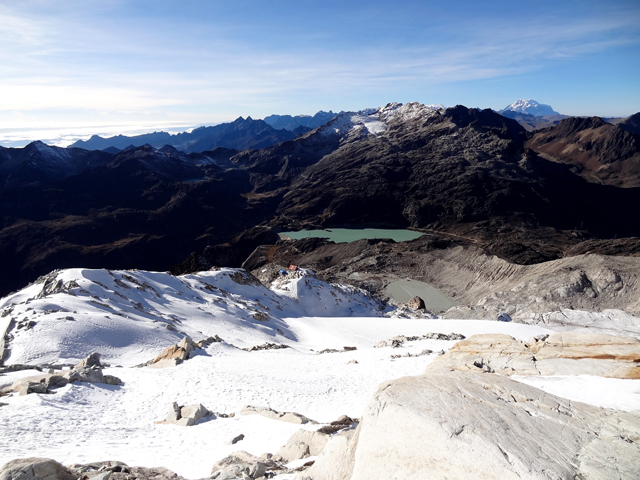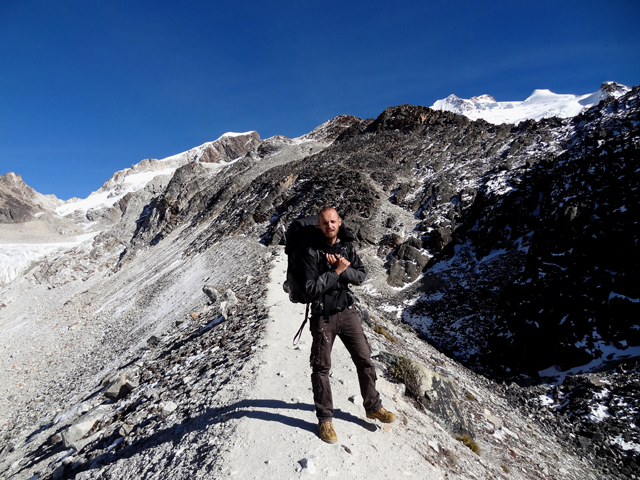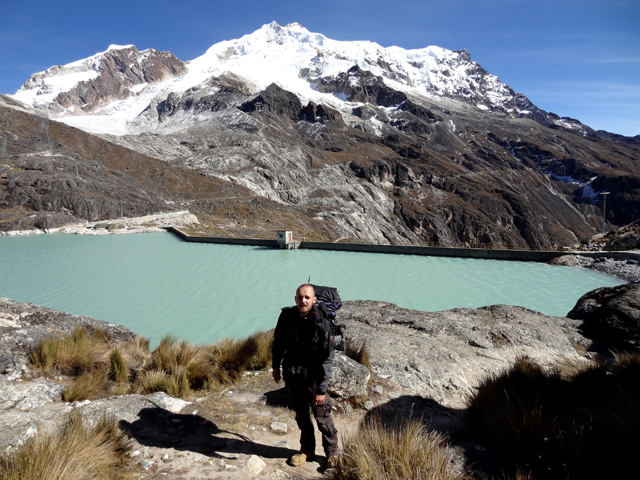Bolivia - amazing landscapes and proud mountain folk, part III (Oruro, La Paz, Lake Titicaca, Tiwanaku, El Choro and Huayna Potosi)
Oruro - Bolivian carnival capital in off-carnival season:
The next day we headed for Oruro - a city renowned for its carnival, but without the carnival - just a quick stopover on our way to the capital La Paz. There is not much to do in this city, but the local market is very big and vibrant, so with the exception of a couple of hikes up the slopes to the viewpoints we spent most of the two days in this city around this market.
View of Oruro:
At the market:
La Paz - the highest capital in the world:
After a few-hours bus ride from Oruro we finally arrived in La Paz. They say you'd never forget your first glance at La Paz and it is quite true: we were arriving in the late afternoon and the view over the city nestled snugly in the valley directly below the highway, with all the lights already on but still enough gentle twilight for us to be able to see the whole of it leaning against the snowcapped peaks of Illimani, was breathtaking. However, despite my firm resolution to come back as soon as possible to that point in the highway to see the views again, we first had to take care of some business - the usual visa stuff, which always keeps us busy for at least a couple of days on arrival into every capital. Our visa application plan for La Paz was very ambitious: Paraguay, Argentina and Chile.
Mountains of peanuts:
A typical street food stall:
"Imagine there's no countries..."
Since I am already half through my second passport during this rtw trip and it's the applications for all those visa stickers for my Belarusian passport which give this trip so much extra charm due to how much visa nonsense we keep finding around the world :-), here is a brief account of these specific three applications. During the first day we managed to secure the first Paraguay visa, which was pretty fast (as it took only half a day, 65 USD, application form and copy of a creditcard) but far from pleasant, as the people in the Consulate struck us as very unprofessional. To start with they would insist on performing every single part of the interaction through a Bolivian guard, the lady behind the usual application window on seeing us enter would block it every time with a small calendar to indicate that we shouldn't even bother approach her with any questions, and they made us wait for about an hour although we were the only people present just because the lady and the Bolivian guard got engaged in really important chatting. Anyway, apart from the waiting and the somewhat rude attitude, this was an easy application.
It was the Chilean and the Argentinian visas where we found some surprises that struck even our visa-proof minds. According to the Chilean visa requirements for a person with a Belarusian passport apart from the usual documents (like bank statement, hotel reservations etc.) I was supposed to obtain the following list of documents: a medical certificate from a specific hospital certifying that I didn't have any chronic or infectious diseases and - here comes the best part - a certificate of absence of criminal record from both the Bolivian authorities and Interpol! Since we originally obtained this list via phone, we spent a whole afternoon trying to establish whether it would be at all do-able to obtain all those certificates - a curious quest which took us to unexpected places like the Bolivian department of criminal justice and would have led us to the building of Interpol but the office hours were over. Since it would have taken us at least half a week to obtain the certificates, we decided to first check if it would be possible to bypass them by having a human contact with hopefully humane Chilean people... And it worked! After we talked to a wonderful lady in the Consulate and told her our "rtw-trip and many visas" story, she took both of my passports (old and new) and our international vaccination certificates (as a replacement of the medical certificate) to the Consul and came back with good news that an exception could be made in our case in exchange for a personalized letter addressed to the Consul with our whole story. After some effort on Jordi's side to compose a letter in proper formal Spanish, a payment of 100 USD in a bank (that was the price for a multiple entry visa) and three days of waiting we did get the Chilean visa.
Argentina was the next and last visa we wanted to get in La Paz but had to be postponed till the next country (Paraguay), since one of the main requirements of obtaining that visa in Bolivia was to have the bus/flight ticket into the country which we wouldn't have till Paraguay. Now to be done with this visa story (since we've already left Paraguay), in Paraguay they didn't care much about those tickets but they did first scare us that according to the set of requirements in Asuncion a Belarusian person could only get a 10-day single entry visa (compare that to 1 month multiple entry that we needed to succeed in our plan of crossing Argentina overland all the way to Isla del Fuego). However, just like in the case of the Chilean visa, another wonderful lady took our personalized letter and many copies to another wonderful Consul, and for the price of 50 USD and only 1-hour waiting we had our multiple entry visa for Argentina. This was the story of those three visas and I put it here to illustrate just some of the nuisance that exists in the world with borders: in a family of two people and two different passports the whole family will have to travel through the world according to the "weakest passport", as no exceptions are ever made according to the marriage certificates or residence permits, which in the increasingly global world with a steadily growing number of international couples means a lot of double-standards treatment of a single-unit family... "Imagine there's no countries", - well, it was definitely easier for John Lennon with his British passport than for me with my Belarusian one...
Views of La Paz:
In between all these visa applications, we found time to go to the viewpoint at the highway - a memorable day trip that apart from the viewpoints took us to a huge local "fair" in El Alto (the High City of La Paz as opposed to the part in the valley) where we found a lot of local women (!) selling among other usual stuff like clothes, shoes and household things car parts and similar "strictly technical" items. Aside from the car parts, another thing in high demand was "shaman" consultations - rituals performed by kind of local shamans in which they'd make small fires, burn special items and recite some chantings in order to bring the person more money, luck, love or whatever it is that they are missing.
Views of La Paz from the highway:
La Paz with Illimani in the background:
A huge fair in El Alto where among the usual commodities women were selling car parts:
On the left, an old couple; on the right - sacrificial llamas for Pachamama:
An indeginous ritual, El Alto:
Bolivia's mining industry nationalization:
One definite consequence of travelling the world is that now and then we actually witness things that make headlines back home, like the swift change of government in Paraguay on exactly the evening we arrived in Asuncion, or the crisis of the Bolivian mining industry due to controversy between the government and the Mallku Khota miners regarding the exploitation of a silver/indium mine near Potosi by a Canadian company. To sum up the conflict, in 2006 the government gave the mining consessions for Mullku Kota to this Canadian company, but the land of the mine as well as the surrounding territories according to the Constitution belong to the indeginous people. Over the years the company encountered resistance from these indeginous groups regarding the exploitation of the mine. There are various points of clashing in this conflict, with the main two being (1) the deterioration of land through open-pit mining due to waste; and (2) economic interests. As to these interests, the conflict is quite complex: there are local communities not in the direct vicinity of the mines that are in favour of the company's presence since this means jobs, educational scholarships etc.; there are other communities that want cancellation of the contract with the company and reversion of the area to the community so that they can extract minerals as a cooperative without the payment of sector-based taxes (hence the name - cooperativista); and finally there is a group that wants cancellation of the contract with the company and the reversion of rights to the state. The problem with the cooperativista question is that it can end up in an individualistic entrepreneurial model of production which is small-scale, so does not contribute to the growth and development of the nation - only serves a few elite interests. But while letting cooperatives exploit the mine is not the preferred option, neither is leaving it to the Canadians that probably don't care for the deterioration of the local eco-systems (despite their claims to the contrary). That said, originally in May-June (exactly at the time we were travelling Bolivia) instead of questioning the role of the Canadian company in Bolivia, the government commenced an "anti-cooperativista" campaign against the dissenting community members, which served to distract attention from the main point: the presence of a transnational mining company in indigenous communities. After the subsequent escalation of the conflict (killing of a miner, kidnapping of the company engineers and armed conflicts between the protestors and the police), the government finally started talking about nationalization. As always, there are pros and cons. While nationalization is good from the point of view of decreasing the presence of transnational companies (so keeping Bolivian resources for the Bolivian people), it's also a very costly approach for which the government currently doesn't have the money. So far the official stand of Evo Morales on this problem is to go ahead with nationalization. Due to the amount of millions the company had invested into the mine, this is bound to get messy, with the mining industries of Peru and Chile quite likely to see some "domino-affect" unrest.
Below are some photos of the indeginous people from Mallku Kota in La Paz. Curiously enough, we first saw them from our bus to La Paz, as they were walking with backpacks towards the capital. A couple of days later they finally reached the city and we saw them again - this time marching in orderly columns towards the centre. We were on our way to the viewpoint at that time, so this encounter took place some blocks away from the centre. Since we were the only foreigners around, we attracted a lot of attention and heard the unavoidable "gringos" bormbarding us from all sides in a not so friendly way. I guess at that time any pale face for these miners would have been the embodiment of all those transnational corporations that take away Bolivian mines from Bolivian miners... Later that day we had another encounter with the miners, but this time just a few guys and at a street food stall. Once again we were the only foreigners there (most tourists think that everything gets served at these stalls with some kind of salmonella seasoning :-). But while they were mean to us as a crowd earlier that day, as individuals they turned out to be quite friendly. We asked them to explain the conflict to us, which they did in very vague phrases and broken Spanish (their native language is Quechua), so all the above explanation of the conflict is based on internet articles (here's a good one), rather than their answer :-).
Titicaca - the blue cradle of Inca civilization:
While waiting for the Chilean visa we also had time to take a trip to Copacabana - a charming little town on the bank of the huge blue lake Titicaca. Our first day in Copacabana started with passively attending a very colourful and very unique "vehicle blessing" ceremony, in which specially trained local priests would bless the cars and their owners by sprinkling holy water and reciting special chantings meant to make the vehicles, drivers or both drive in the safest way possible. Apparently, part of the blessing would come from pouring a little bit of beer over the vehicle and drinking the rest of it :-). We spent the rest of the day after the ceremony hiking through the area around Copacabana and climbing twice (my personal achievement in persuasion skills in regards to Jordi) up the Calvario slope (the main lake viewpoint), once during the morning and the second time - for the views of the sun setting over the Peruvian shore of Titicaca.
Women selling vegetables around the market in Copacabana:
The most favourite desert of the Bolivian people - jelly with lemon-flavoured whipped cream:
Copacabana vehicle blessing ceremony is so popular, we heard people come all the way from La Paz to have it performed on their vehicles:
These kids were happy with their vehicle anyway, without the garlands and the blessing:
At the Calvario viewpoint:
Sun descending into the Peruvian shore of Titicaca:
The animal trek:
Our walking activities that day included hiking up another slope (and more persuasion on my side :-) but was a really happy little adventure, as along the way we found a lot of views and a lot of animals. In fact, we had so much curious interaction with the llamas, sheep, dogs, cats, cows and pigs that we labelled that day's hike "the animal trek". Our favourite parts of that interaction was taming a lamb (which enjoyed cuddling so much that it would delightedly wag its tiny tail at every touch) and learning the body language of llamas. For this latter one as we watched these animals switch between two distinct ears + tail combinations depending on our proximity to them :-), we learnt that in llama language ears up/tail down = "I'm relaxed and attentive", and ears down/tail up = "You are making me nervous, please step away... or I will."
Llamas' cute and dignified faces:
Ears up/tail down = "I'm relaxed and attentive":
Ears down/tail up = "You are making me nervous, please step away... or I will":
Day trek through Isla del Sol:
We spent the whole next day trekking through the entire length (about 9km) from north to south of Isla del Sol - a picturesque little island which was the cradle of the Inca civilization. Since the return boat was leaving at 4pm, we had about 5 hours to get to the southern tip and visit all the highlights along the route, so we had to trek in a bit of a hurry but that way were able to avoid having to sleep on the island (which in case of such small and touristy islands is always a kind of a trap from the point of view of accommodation and food). It was a gorgeous one-day walk with stunning views of both sides of this narrow mountainous island from the path and a memorable stop at Roca Sagrada - a picturesque piece of rock face which the Incas believed to be the Father of their civilization, or Viracocha - the God of Sun... We hope that the blessings we asked at the Roca Sagrada (following the advice of the local guide and the Rock's big fan) are coming our way :-).
On the way to Isla del Sol:
A huge dark cloud wrapping the whole island - lucky for us the wind blew it away so we didn't have to trek through the "Island of sun" without the sun:
Views along the trek:
An indigenous priest at the Mesa Sacrificial near Roca Sagrada waiting for customers for a blessing ceremony:
And a customer arrived - we saw this lady with her grandson later that day on the boat returning to Copacabana. She told us how the local people worship both Pachamama and the Virgin Mary, and how that day she made a pilgrimage to Roca Sagrada to ask for a blessing in her family conflicts from Viracocha - the God of Sun:
Labyrinth-like Chincana ruins, built by the Aymara people long before the Inca civilization:
Roca Sagrada:
The path:
A Peruvian reed boat, down at the Southern shore pier:
View of Cordillera Real from the bus back to La Paz:
Day trip to the ruins of Tiwanaku:
Our next adventure after Isla del Sol was the historic site of Tiwanaku which is much older but less spectacular than Machu Pichu in the nearby Peru. It provided us with some curious discoveries regarding the historical timeline: according to a very neat board they had in the museum it turned out that the Tiwanaku civilization was much older than that of the Incas and existed roughly at the same time as the Egyptian one. These days Tiwanaku is a collection of ruins at a place close to La Paz which includes remnants of a couple of ancient pyramids and temples. Although most of it is reconstruction work, walking through the ruins you can see curious things like the water drainage system in the walls of the Kalasasaya Temple, or the stern carved faces on the walls of the subterranean temple. Another interesting part of this visit was learning more about Pachamama - the "Black Mama" deity who since the Tiwanaku period is watching over the local people (but these days - in cooperation with the Catholic church). There are two statues of Pachamama at Tiwanaku - one in its original location in the Kalasasaya temple and the other - biggest one - in the museum. The local religion being a truly curious hybrid of Animanism and Christianity, the indigenous people of the Andes worship both Pachamama and the Virgin Mary... Looking at the stern angular face of Pachamama carved on the giant rock monolith at the Tiwanaku museum, I could see where Her appeal comes from...
View of the ruins of Putuni, or the Palace of the Sarcophagues (its inner walls contained funeral chambers):
Pachamama statue in the Temple of Kalasasaya, and a tenon head embedded in the wall of the sub-terranian temple:
View at Pachamama in the Kalasasaya temple from the sub-terranian temple. On June 21st (the day we left Bolivia) crowds of Aymara people gather in the Kalasasaya temple reaching out their hands towards the sun as the priests are performing sacrificial rituals to celebrate the winter solstice which corresponds to the Aymara New Year:
Elaborate drainage along the walls of the Kalasasaya temple:
Pumapunku - a rectangular terraced earthen mound faced with huge megalithic blocks:
Stuck in a traffic jam, between a bus and a car:
Exploring the Andes - El Choro trek:
We closed our Bolivia trip with two awesome treks in the Andes - the 72-km El Choro and a climb up the 6088m summit of Huayna Potosi. Here is a brief account of how they went.
In order to do the El Choro trek we were faced with a dilemma similar to the one we had back in Tarija regarding the trekking gear, but this time since we'd head for much higher mountains we knew we couldn't last through another starry but freezing night without a tent. Luckily, La Paz was full of shops for trekking gear and after talking to a very helpful guy at a local agency we found out that just around the corner from all the touristy ones there were shops for local people, with much lower prices. After a day of field research, we finally had a tent, two sleeping bags (-20° extreme/10° comfort) and a tiny portable gas stove - the whole pack for about a hundred dollar. Our "travel light" days were officially over, but we got access to all the fun of camping :-).
On the first day of the El Choro trek we took a minivan to La Cumbre (on the road to Coroico) and after registering at the lonely logbook at the ranger's house started walking up the path. Most of the walking of the first day is through brown mountains with snowcapped peaks and occasional blue lagoons with those snow-capped reflections and closer to the end of the day as we changed the belt and the colours changed from mostly brown to mostly green - through llama pastures and tiny villages. For the night we stopped at Challabamba - a truly perfect camping spot right next to a picturesque hanging bridge over a tumultuous mountain river (we couldn't hope for a more beautiful and comfortable location to try out our brand new trekking gear).
A lagoon at La Cumbre, the beginning of the trek:
The view of the Death Road from the beginning of the path at La Cumbre:
Campsite at Challapampa:
The second day after a night of sleep (as opposed to star-watching back on the Inca trail around Tarija :-) we continued walking (mostly down) along the ancient path (another Inca trail). While the first day was mostly about brown mountains, the second day was all about green mountains, rivers, butterflies, hanging bridges, and lush jungle vegetation. Our milestones along this day's trek were the few tiny camping sites, which could be seen from far because of the light-green patch of banana trees grown there by a single family running the site. And while some sites had better view or better lawns than others, we chose to sleep at Buena Vista - with inferior views and lawn, but exactly at the end of our day's itinerary and run by a sweet young lady with a cute little boy (who kept building mega structures from pieces of wood) and a hen with many tiny chickens.
Dozens of plants species:
The last day of the trek was much shorter but boring compared to the first two, as it was all about descending all the way down to the village of Chairo, where we would catch some transport to Coroico. It was through the same jungle path like the previous day, but somehow that stretch of the path was covered with thick vegetation on both sides so unlike on the previous day we didn't have views of the velvety green slopes - only of the same path with the same plants all the time. Our only entertainment that day were butterflies that were flying like floating flowers all around us (some of them were huge and had amazing colours and patterns). That trekking day was quite short and by about lunchtime we arrived at Chairo and found a guy who'd take us to Coroico for 100BOB. While we were waiting for him to finish the anti-corruption meeting they were holding with the whole village against some guys from the local government who were supposed to build refuges along the El Choro path but didn't (the usual "where did the money go?"), another couple finished the trek and would share the car with us. After half-an-hour-drive the guy dropped us at a crossing for Coroico and the trek was officially over.
A girl having a very thorough shower at the Yolosita crossroads (close to Coroico):
The rest of that day was about a lot of driving through winding roads: in one afternoon we went up to see Coroico (the starting place for the Death Road bike tours) and all the way down to La Paz. While most tourists do some part of this way down by bike (although via a different old road), we opted for skipping this biking adventure because it was a purely touristic - and therefore not really a "jooi" - experience.
Coroico:
Back in La Paz (Illimani at the background):
The best shoe-repair guy in Bolivia:
Climbing to the summit of Huayna Potosi:
We arrived back in La Paz late in the evening and were planning to spend the next day relaxing before our next big adventure - climbing Huayna Potosi, but that was before we discovered in the second half of that day that my visa extension would expire two days sooner than what we'd thought so we had to hurry if we wanted to be out of the country on time. On discovering that, we had to basically run into the first agency we saw (luckily Huayna Potosi Tours tuned out to be a good one) and arrange the trek for the next day. Because of the time shortage, despite the recommendations we saw everywhere to do the climb in three days, we went for the two-day option. And here's a short account of our first climb of a 6000+ mountain.
We left La Paz in the morning with another couple and on the way to the base camp stopped at some place to pick up all the ice-climbing gear (which I saw and tried on for the first time in my life). After a two-hour drive we arrived at the cozy base camp refuge. Shortly after that we had lunch, then half-an-hour rest and then it was time for me and Jordi to start the ascent. Now the normal 3-day climb agenda looks like this: day 1 - arrive, have lunch and go to the nearby glacier to do some ice-climbing practice but essentially to just try to use crampons (the metal spikes that are attached to the plastic boots), a harness and an ice axe; day 2 - do nothing the whole morning, have lunch and start the climb (that's where it catches up with the 2-day climb agenda). So another reason for us not to do the climb in 3 days was that the first day sounded too much like a waste of time (and a little bit of money since there is not much price difference between the two options).
The trek up to the high camp took us a couple of hours and passed through some beautiful scenery with views of the gorgeous green lagoon behind us (one of the several coloured lagoons at the base of the mountain) with the base camp refuge right next to it, and the vast glacier directly below the path, where the other couple was already starting their ice-climbing practice. Half through our hike up to the high camp we reached the point where the path became covered in ice (kind of very hard snow) - that's where we changed into our plastic boots, put on the crampons and the guide explained to me how to correctly hold and use the ice axe and I tried walking up and down in crampons. It was no-brainer, so after about 2-minutes practice we were all set to go. After another while we passed the colourful public refuge and soon after that reached the bright orange refuge of our agency. This one was small but felt very warm and welcoming. Our guide quickly boiled some water from a bucket of snow so we could have hot tea. Then he made us dinner (some very decent instant cream soup with a nice touch of crispy potato fries and a second course of instant noodles with sausages which I couldn't handle but Jordi ate in preparation for the strenuous hike). The normal agency plan for trekkers is to leave at 1am, but based on the estimation of our trekking speed the guide told us that we should leave at 2am not to arrive at the summit before the sunrise. That gave us a whole extra hour to sleep, or rather try to sleep, as falling asleep at 5pm and trying to do it through the deafening howling of the wind was a difficult thing to do. The wind was so strong that at times it sounded as if it was going to pick up the refuge and start flying it around like Dorothy's house in the Wizard of Oz. Our guide told us that he never sleeps during the climbs as he can't, and we did hear the feeble sound that was probably him playing games on his mobile through our half-awake sleep. At 1am our alarm went off, we got up, put on our harnesses and plastic boots, had some breakfast, attached the crampons to the boots and the rope to the harnesses and started climbing up Huayna Potosi, using head lamps as a source of light. Now, Huayna Potosi is a very popular climb in Bolivia since it's considered to be one of the easiest in the Andes for beginners to get a taste of alpinism, so there are a lot of accounts of people's experience from this climb on various travel blogs. Before undertaking this trek, we googled Huayna Potosi to see what to expect and the absolute majority of those blogs were saying that it's a truly strenuous hike, with 6 hours of walking up steep ice walls. Many were describing experiences where they were either on the verge of or actually aborted the ascent. The personal statistics of our guide are quite in line with what we read - according to him, about 50% of people make it to the summit. (But I also think that in previous years the climb might have been more demanding due to the shape of the ice which changes over time.)
Maybe because we were preparing for the worse, from the point of view of effort the ascent actually felt easier than what I'd imagined it to be. Our guide was actually getting worried that we were going too fast :-), as according to his estimations if we didn't stop more often and longer we'd arrive to the summit long before the sunrise. And in line with all this bragging, at this point I should add that he also told us we were "muy fuerte" (very strong) and would be able to climb Illimani (the highest mountain in the Cordillera Real). Now the only challenge of this trek from my personal point of view was not a physical, but a mental one: the very last 50m stretch of the climb passes through an extremely narrow edge of ice, with 2000m on the right side and 500m on the left. The strong wind, the extreme thinness of the path, darkness, absence of any wall that would hold the ice axe in some parts of this stretch and having to deal with ice too hard to get proper hold with the axe in the parts with a small wall do not exactly help. What does help is the knowledge that the summit is right after these 50m of concentration. We made it to the summit of Huayna Potosi at about 5:50am and had another 40 minutes to pass before the sunrise. As with all the sunrise viewings from the mountain summits, the waiting was full of pain. It was so freezing that even the camera would take two attempts to fully open the lens each time I'd decide to take some photos. Closer to the sunrise another group arrived (we'd overtaken them earlier that night) and the tiny summit got quite crowded. The sun first lit up the icy edge we had just walked through, and then gradually revealed all the slopes of the surrounding mountains. The long narrow stripe of cloud hanging over the mountain ridges turned gentle pink. We started walking down.
It took about the same mental effort to undo the thin icy edge as to walk it up in the first place and our guide was just as serious about it as on the way up. There were two things which showed us this. First, as I paused to try to hurriedly get a photo of Jordi walking that edge he urged me to keep going in a nondisputable way. And second, half through that edge we saw a lonely local girl walking towards the summit: as she looked and talked crazy and was not even using her ice axe for security, our guide grew very concerned and tried to quickly show her how to use it (later on he'd tell us she must have been insane to climb alone). But after that 50m stretch psychologically the climb was over for all of us, as there was no longer any physical or mental effort necessary. It took us a couple of hours to get down to the high camp refuge where we took a short rest and another couple of hours to the base camp. The feeling of celebration was even stronger because of how surreally beautiful the scenery looked: now we could properly see all the spectacular crevasses that we'd passed in the night. On arrival we had a shower, lunch and chatted a little bit with the couple we'd met the previous day who were still waiting to start the trek (it was difficult not to feel the selfish triumph of people who'd already accomplished something somebody else still had to :-). Funnily enough, our after-the-trek agenda was totally opposite to what most people do after greeting the sunrise on the summit of a 6000+ mountain: instead of taking a rest we took a 2-day bus to Paraguay (17-hour ride to Santa Cruz where we changed to an 18-hour bus to Asuncion).
Views of Huayna Potosi from the drive to the basecamp:
Trekking to the highcamp:
View of the glacier from the path:
The rock changed into ice - time to put on the crampons:
View of the colourful public refuge:
At the highcamp:
On the left - starting the assent from the highcamp, 1:52am, on the right - view at the city of La Paz from the summit, 5:50am:
On the right - view at the thin edge of the last 50 metres of the climb:
Descending:
Back to the basecamp:
It felt like we left Bolivia in one breath, at one moment still feeling the icy wind on the summit of Huayna Potosi and at another one - the gentle breeze of the much warmer green lowlands of Paraguay. More on how we arrived into this country on the day the Paraguayan people decided to overthrow their government and how we had to look for a hotel with shots being fired somewhere very close to us and every crossing of the centre of Asuncion being guarded by heavily armed police in the next post...
